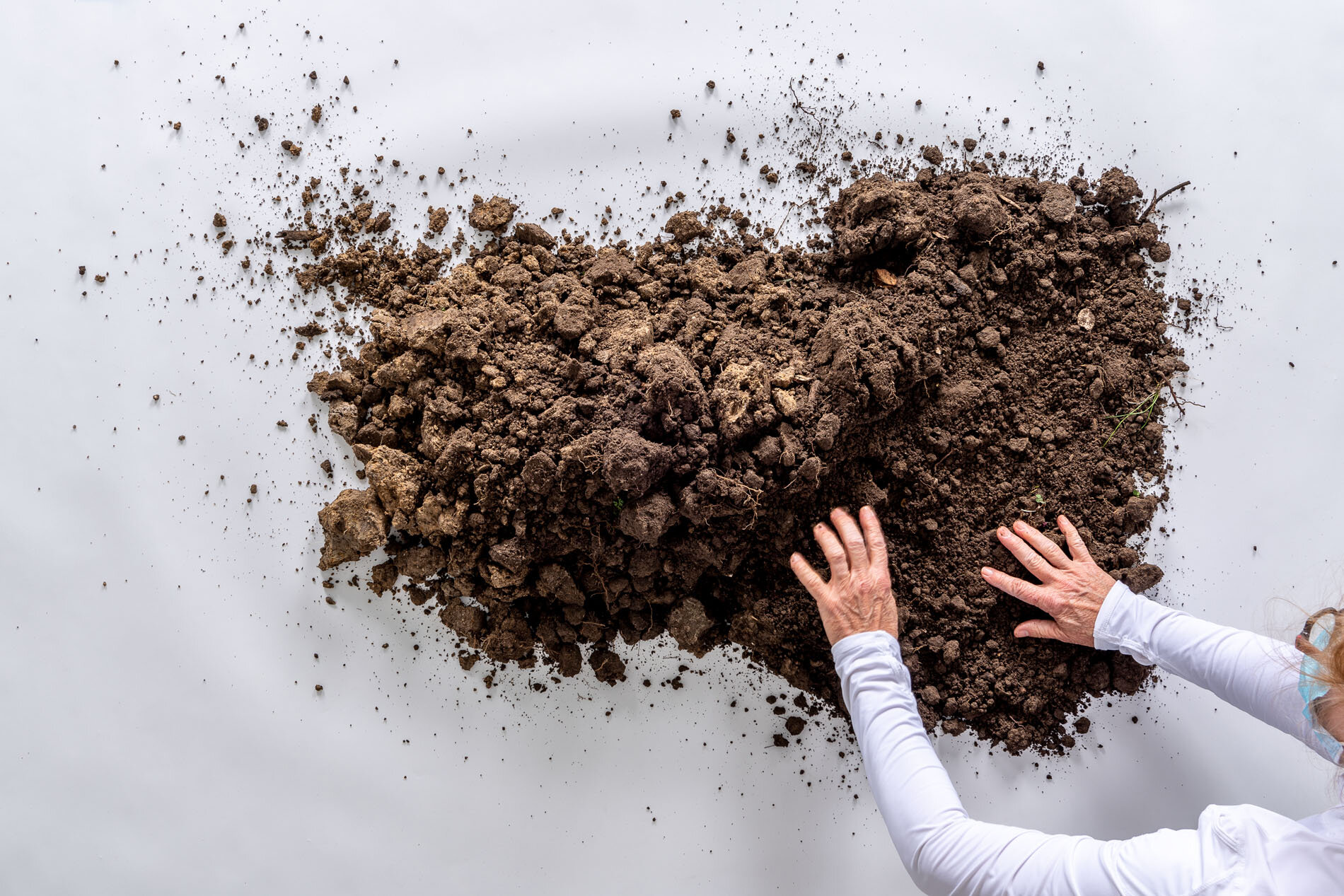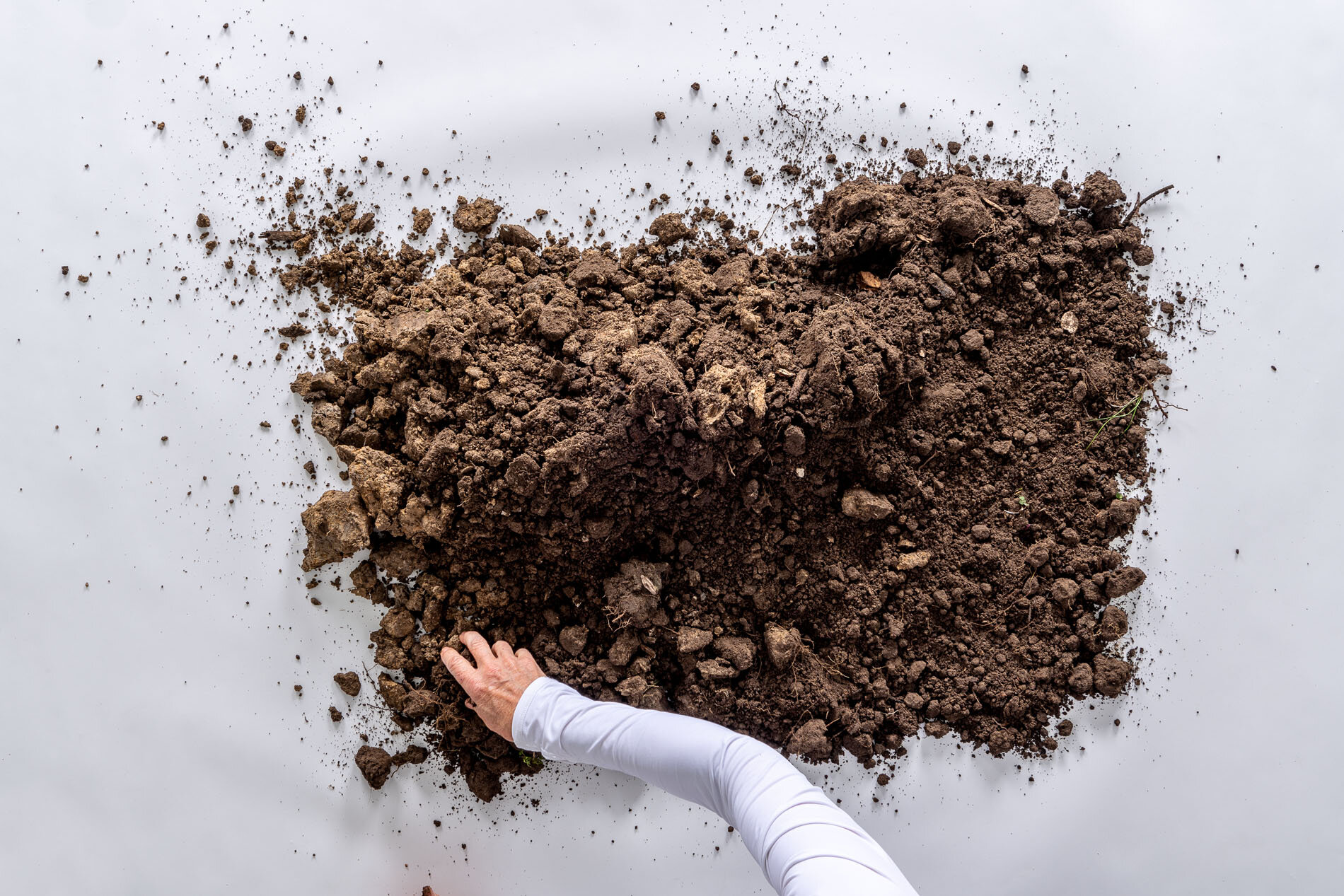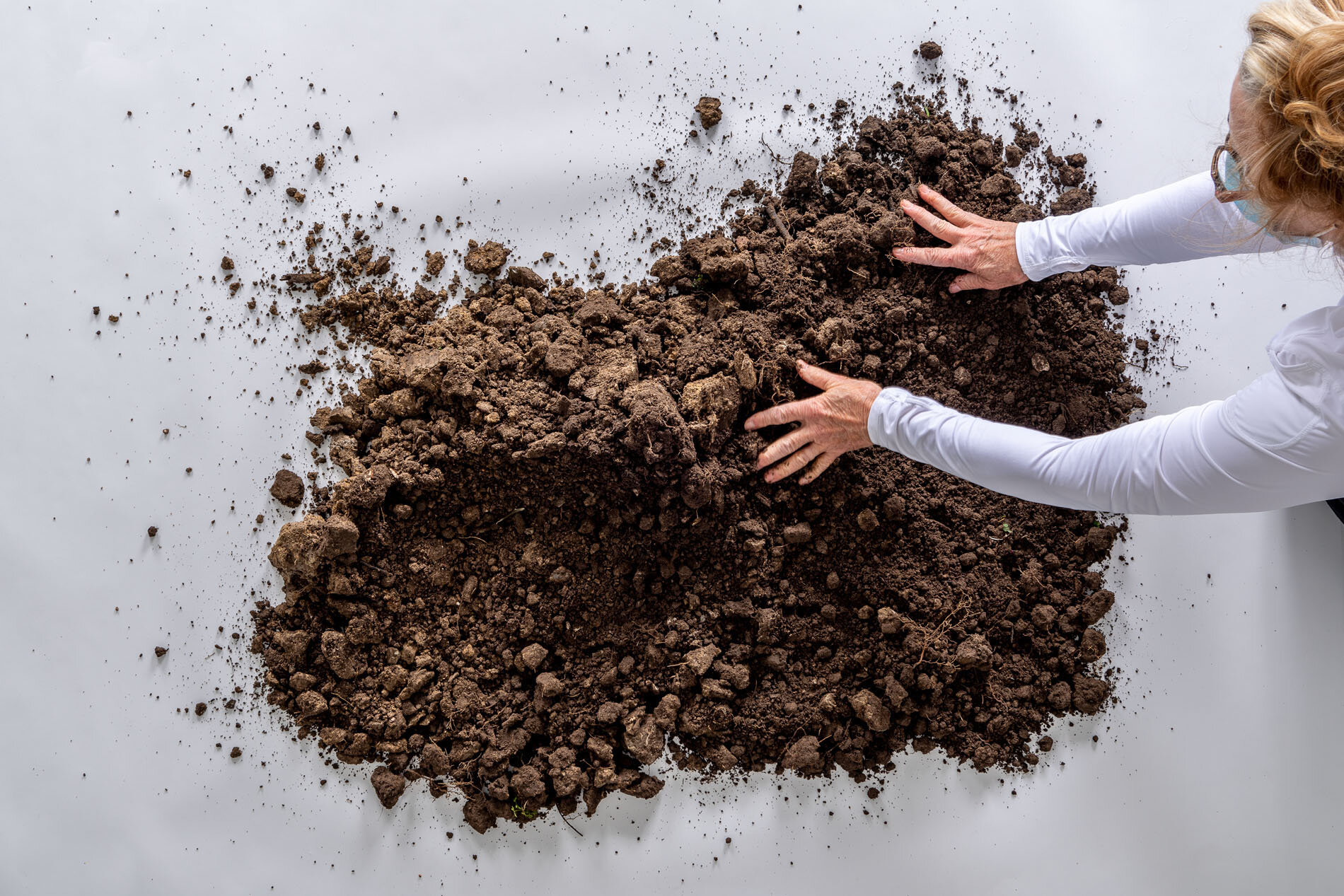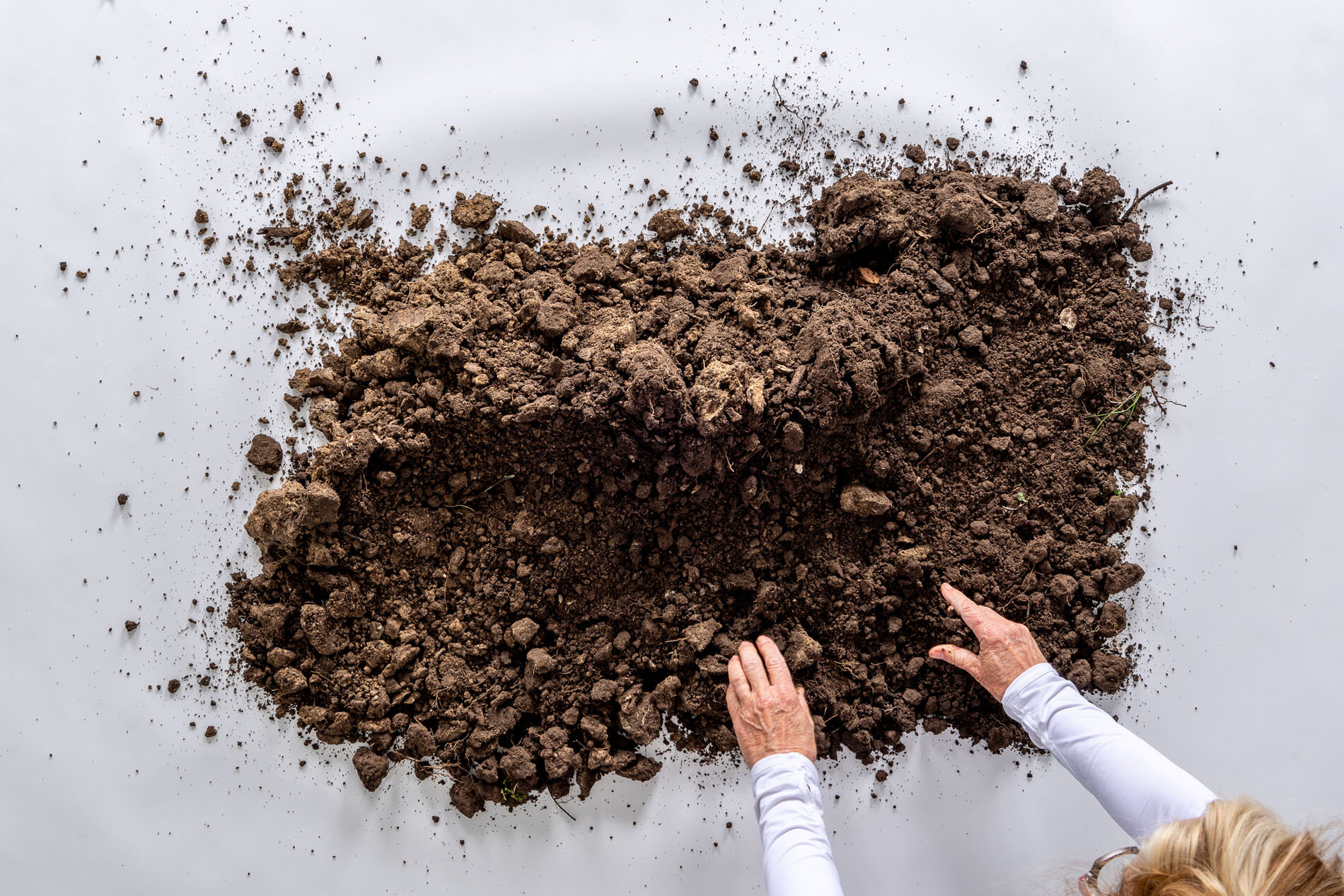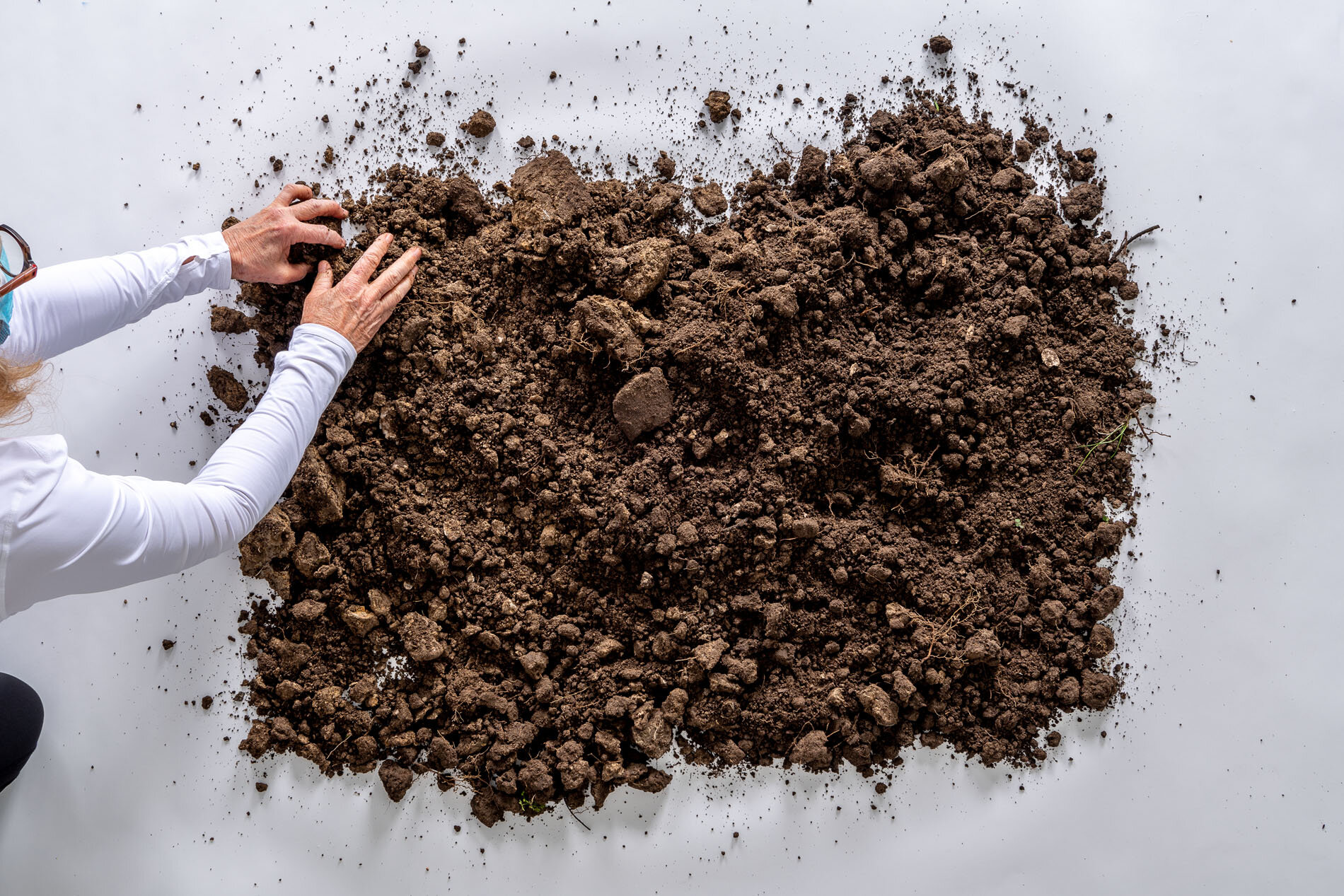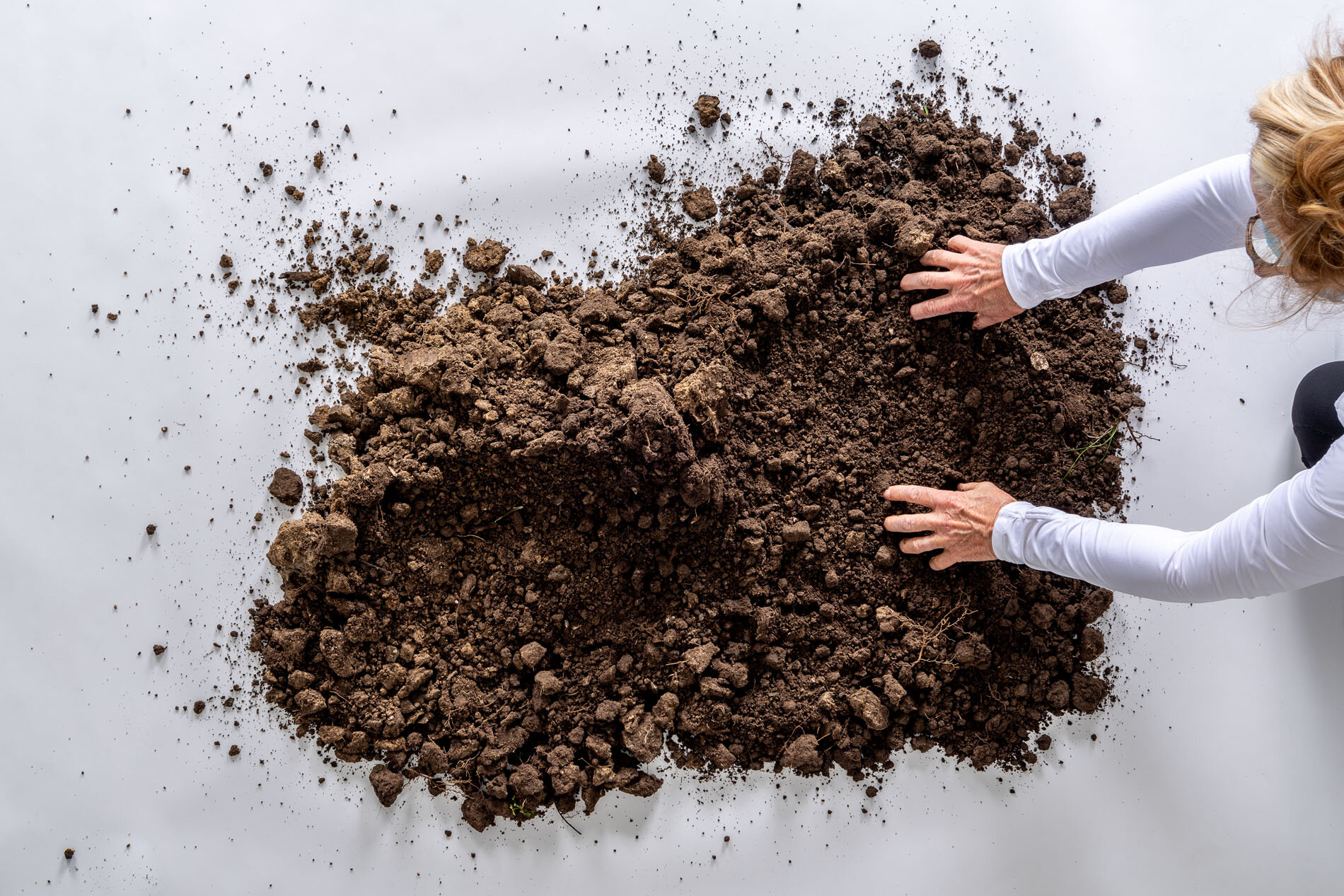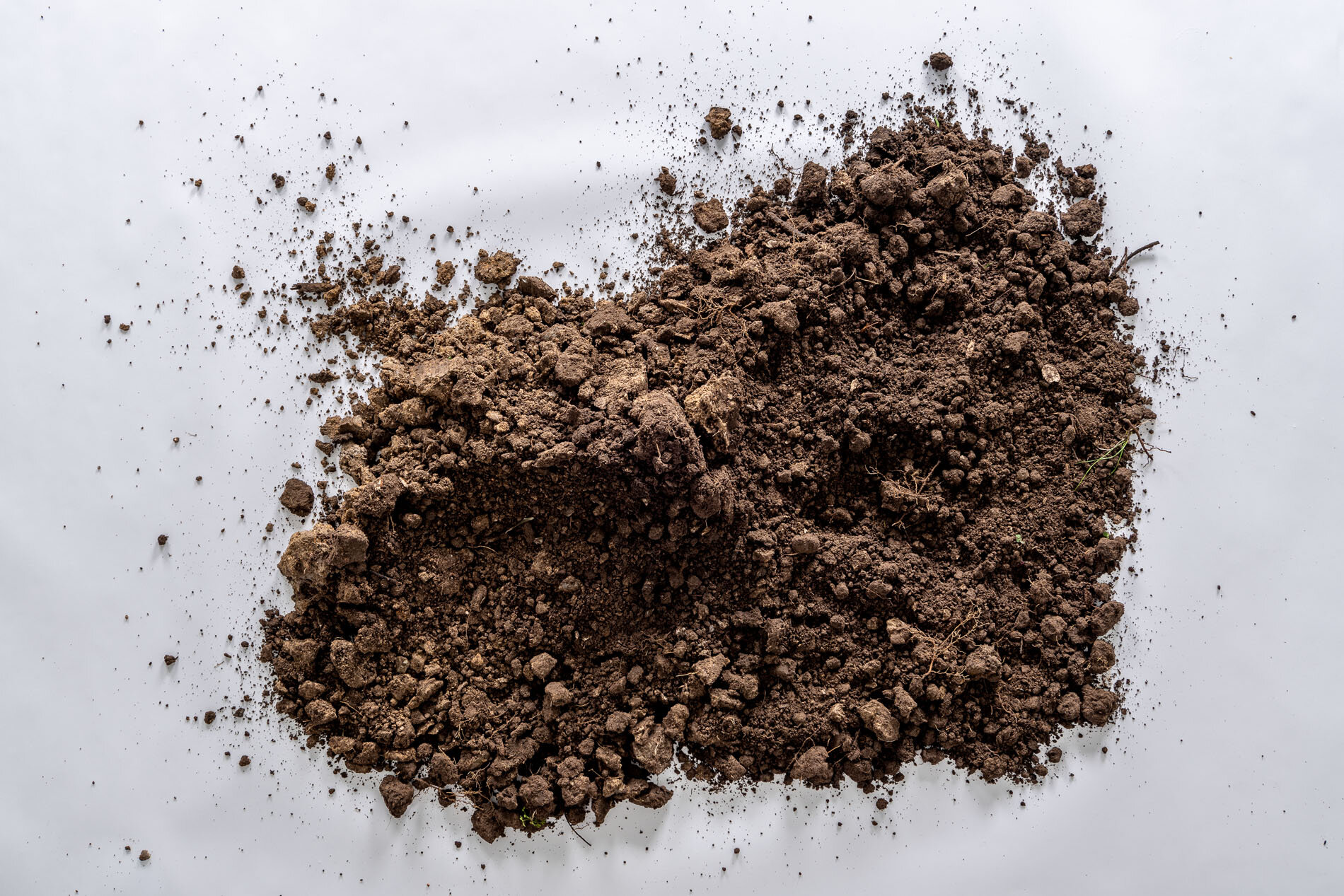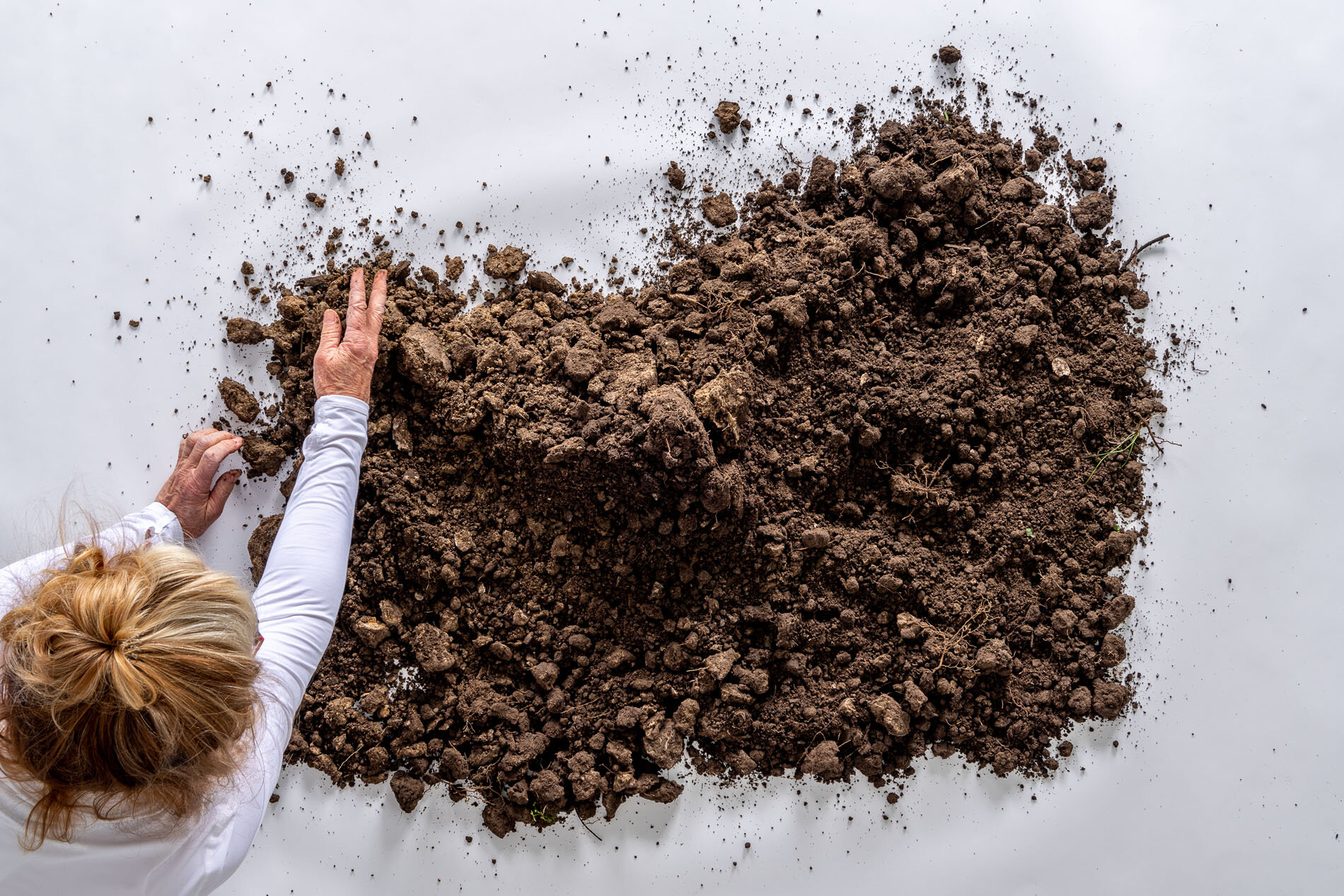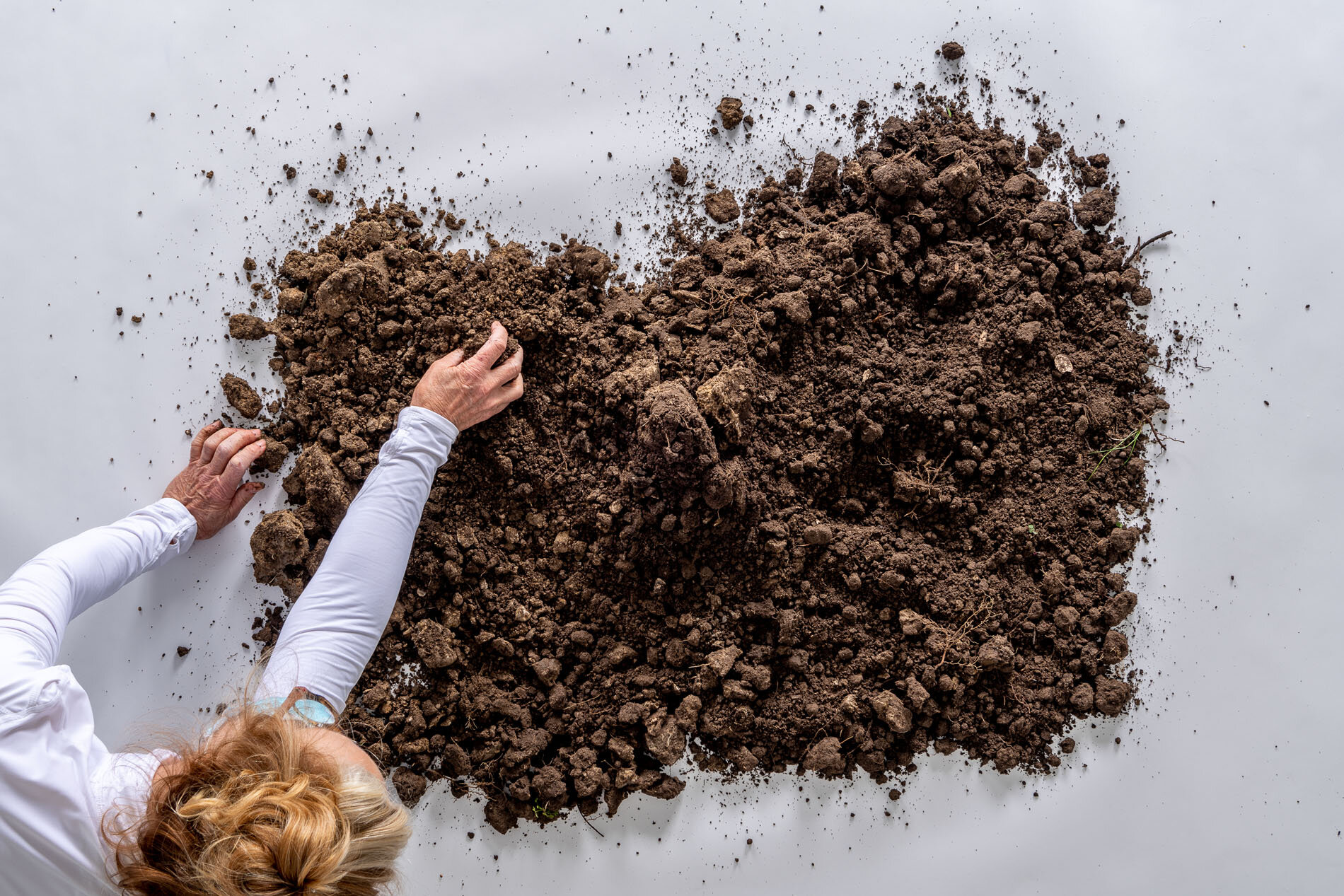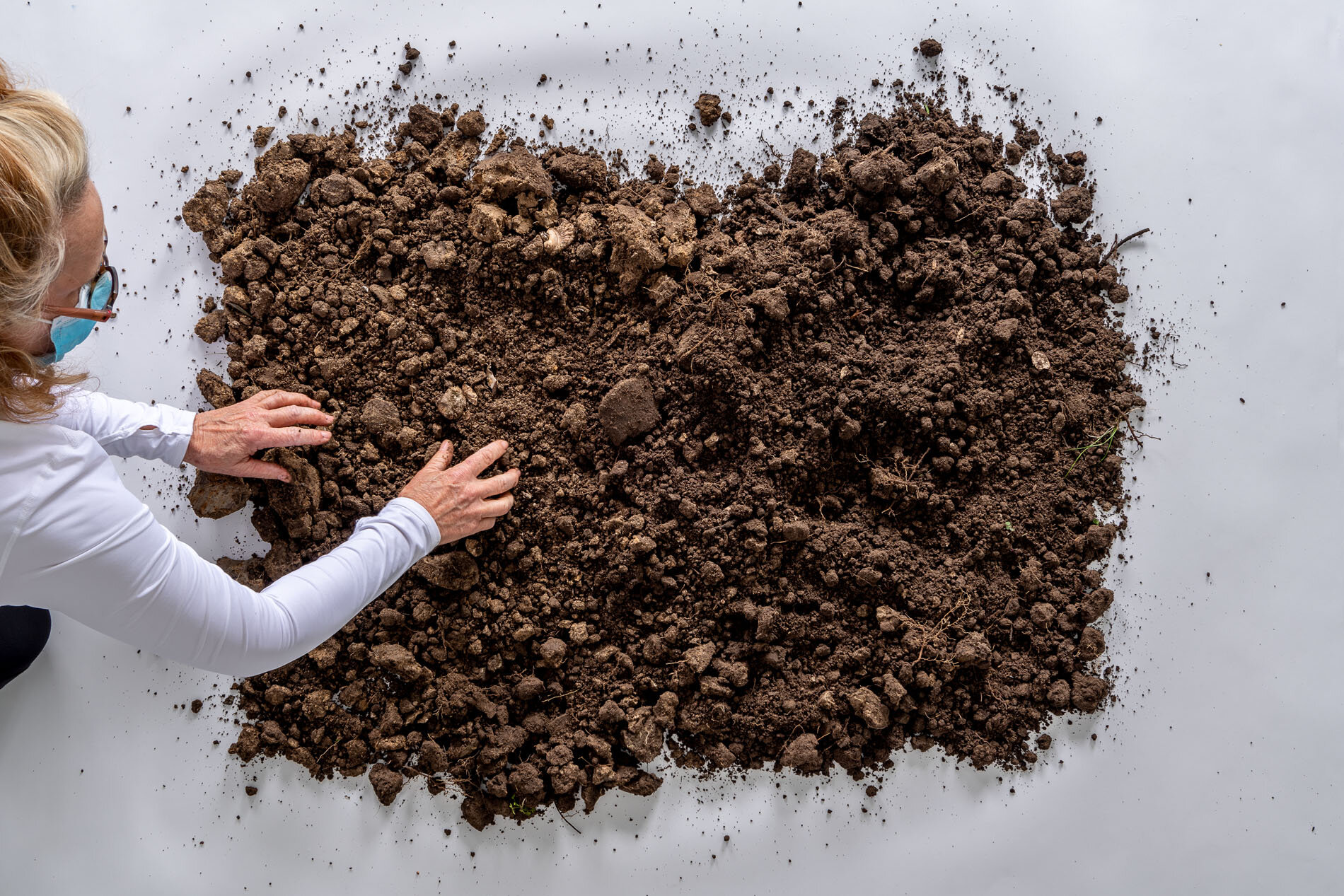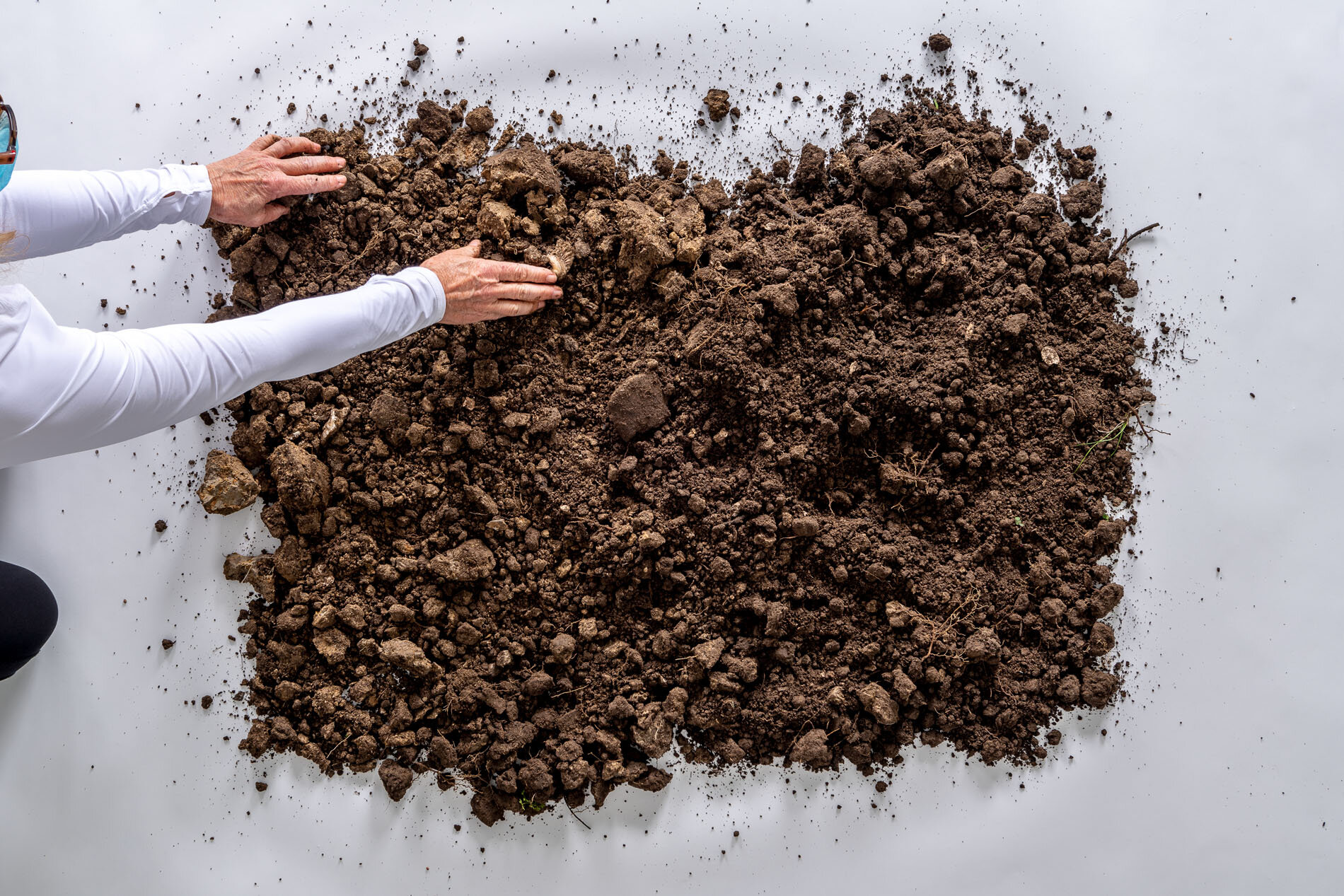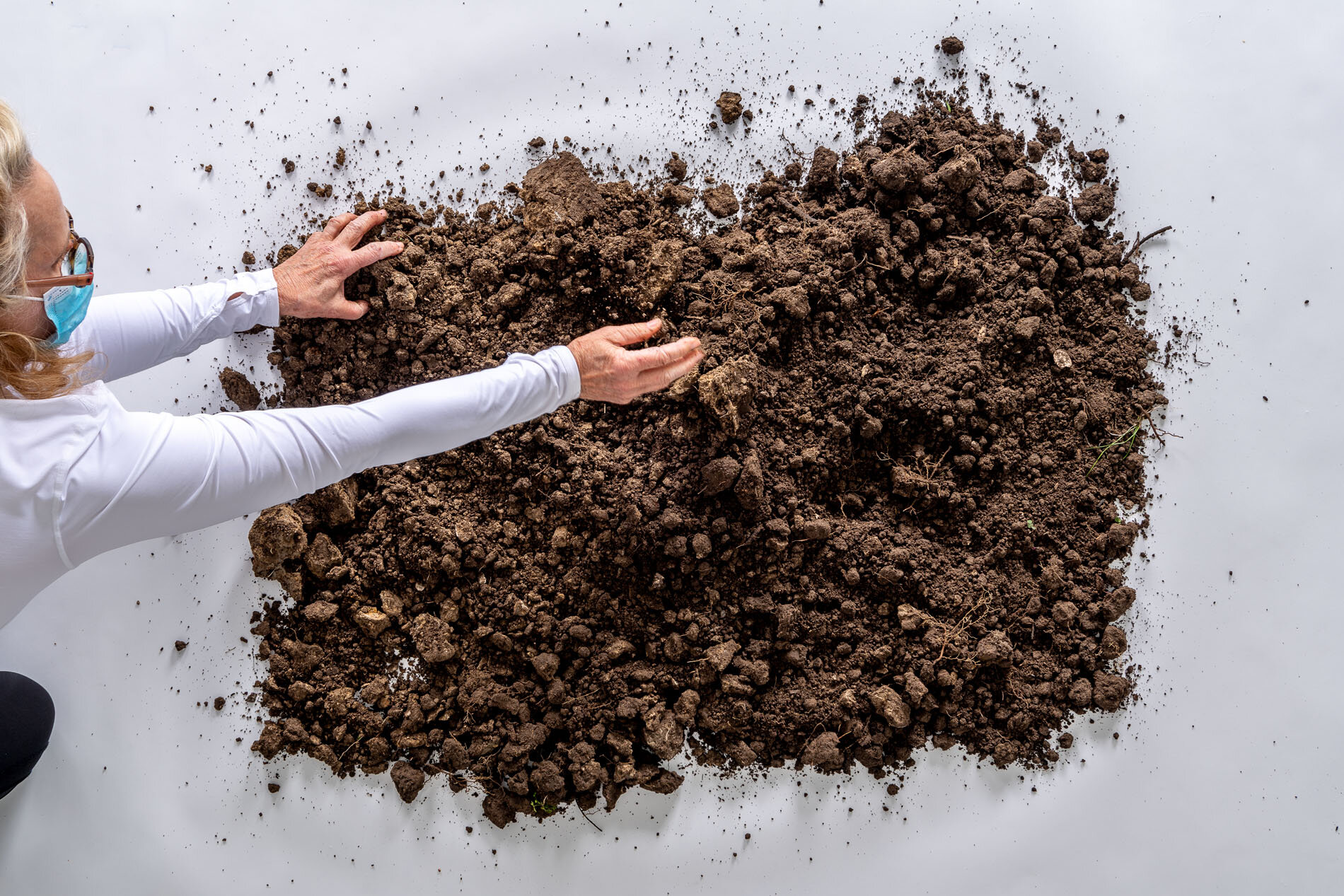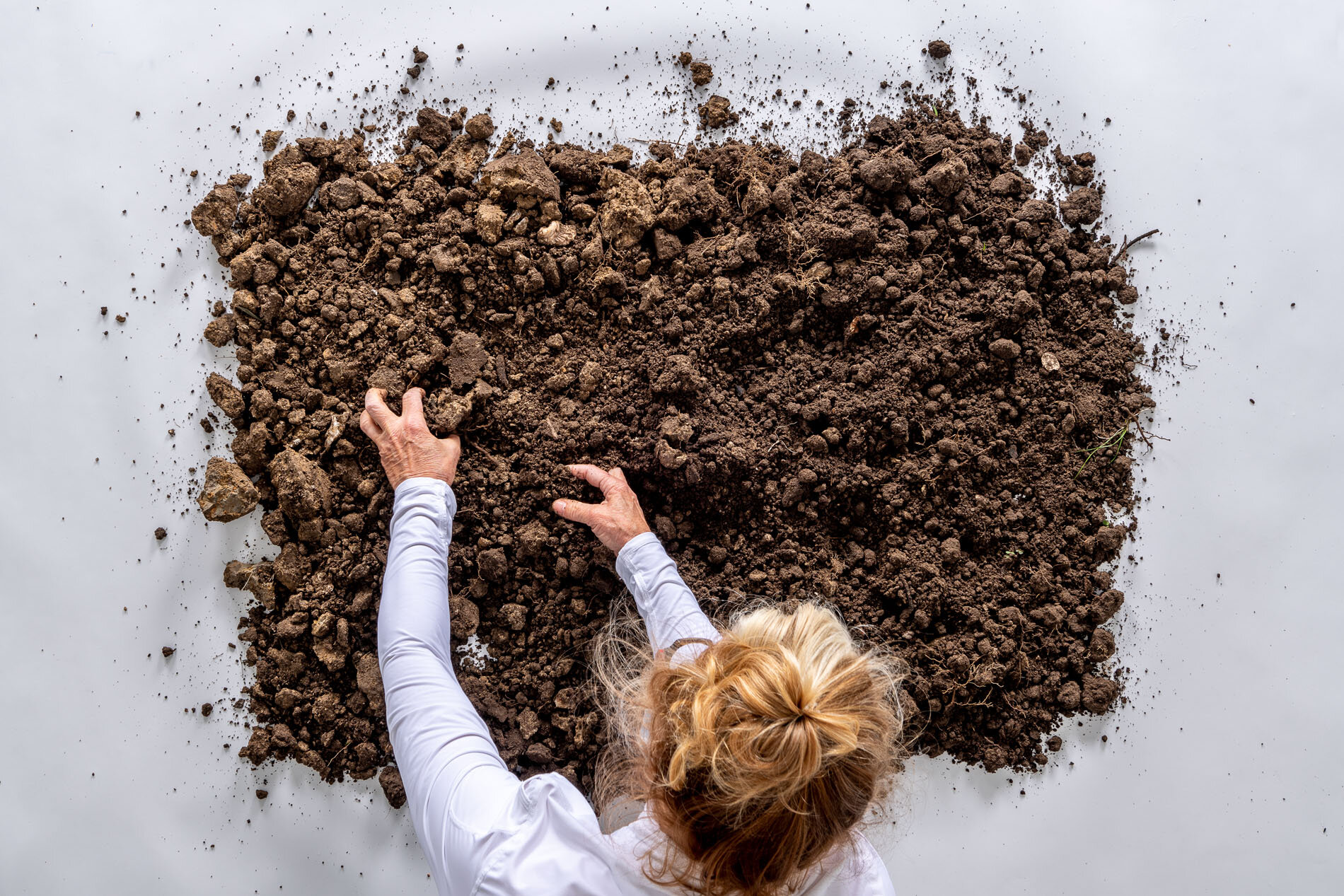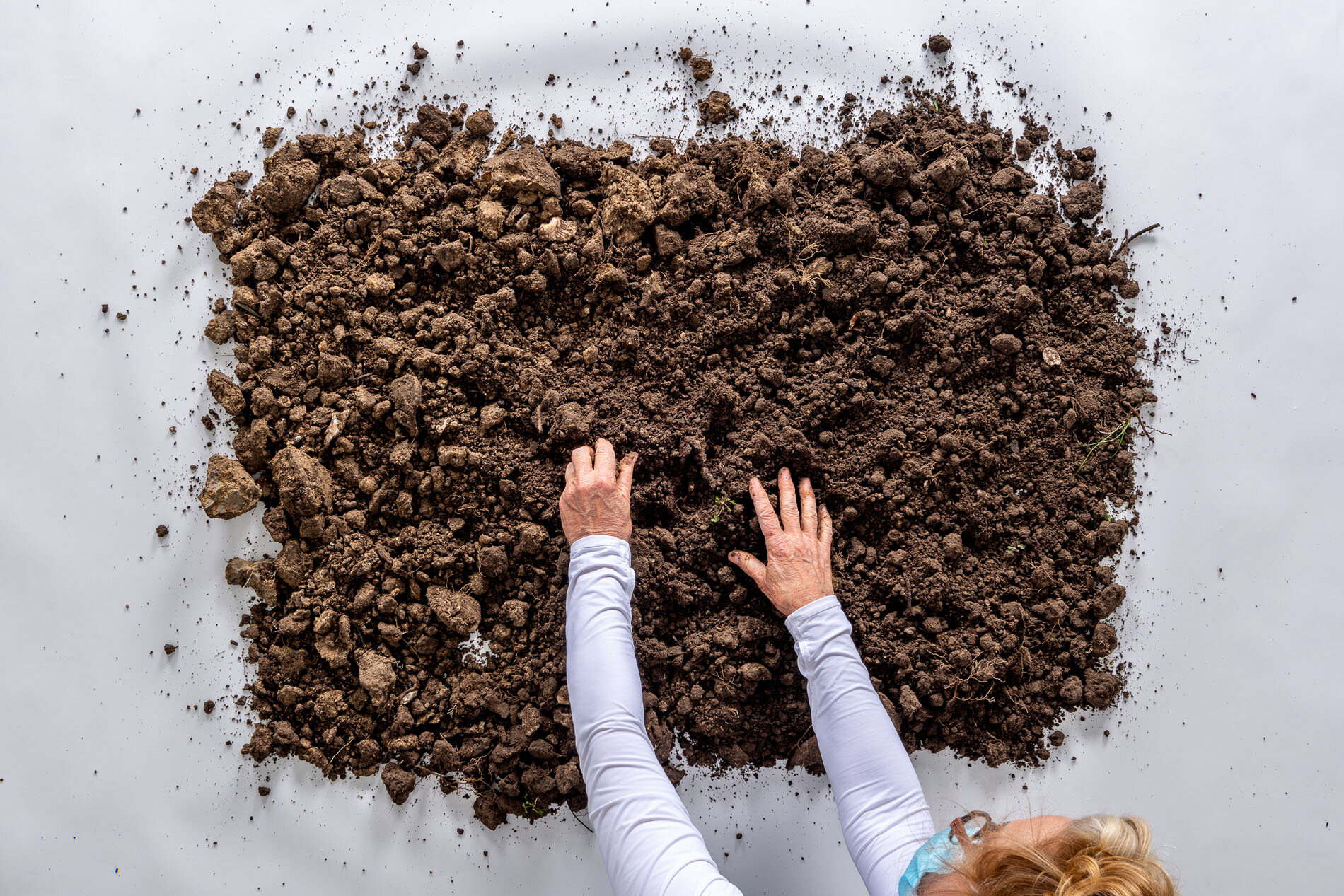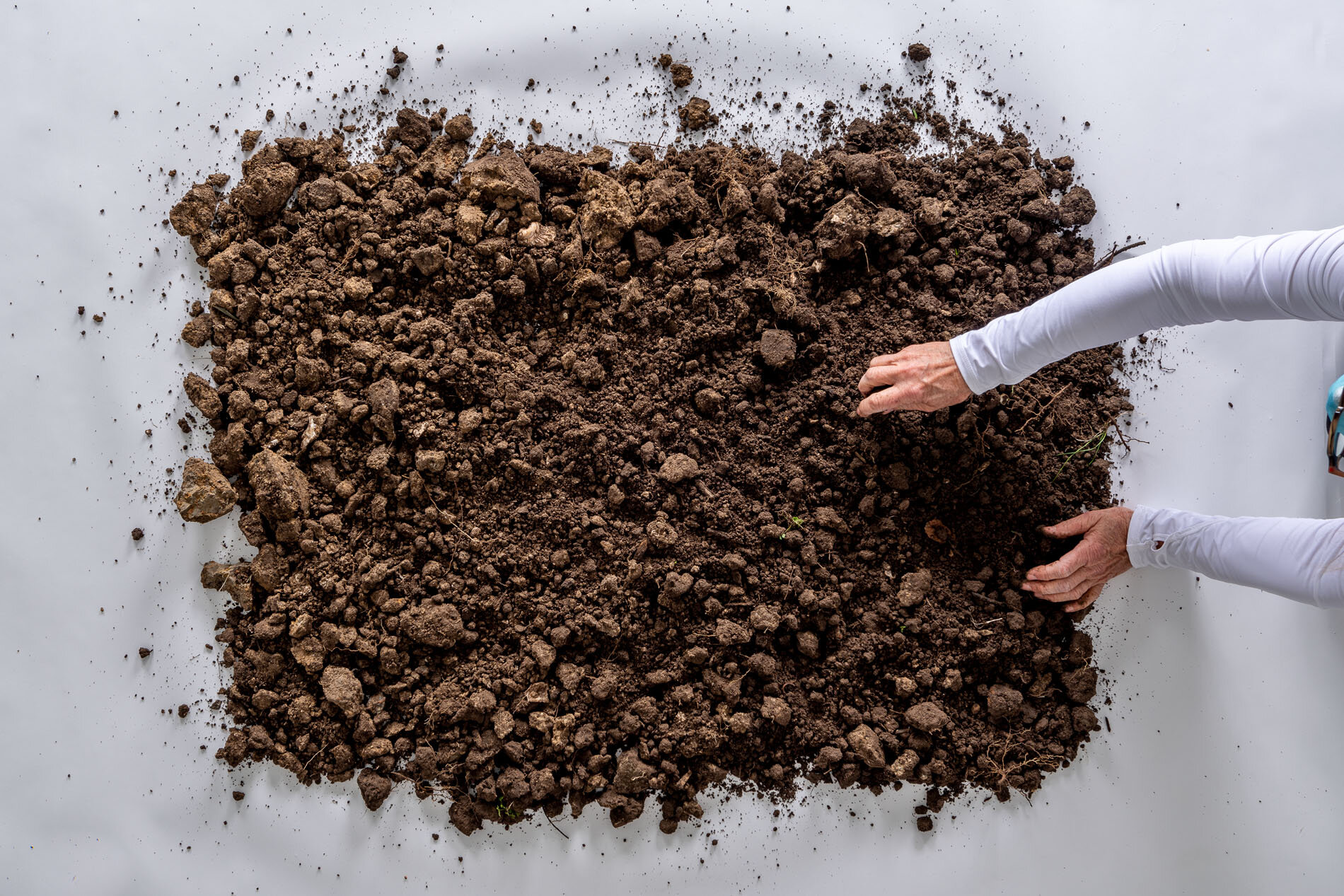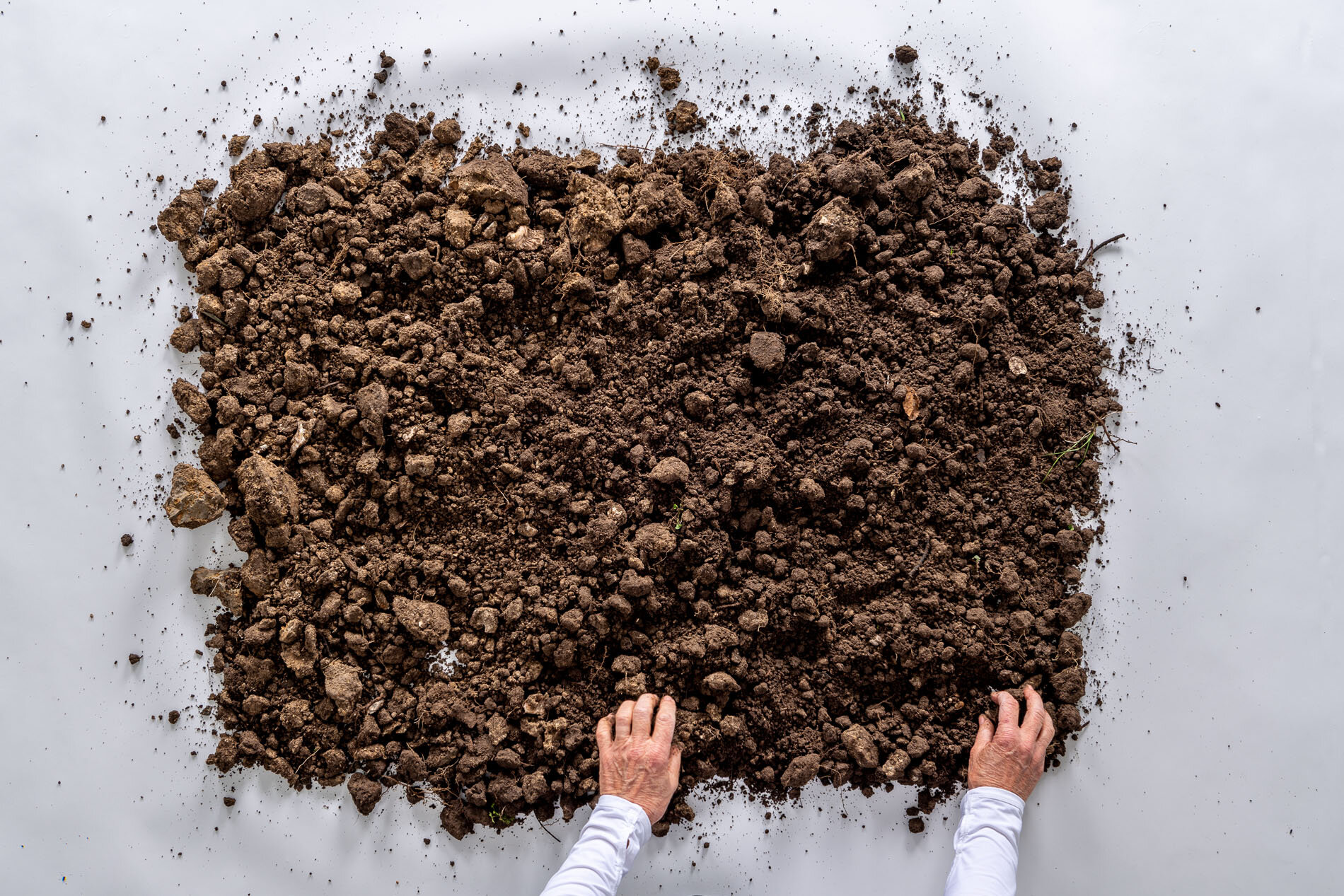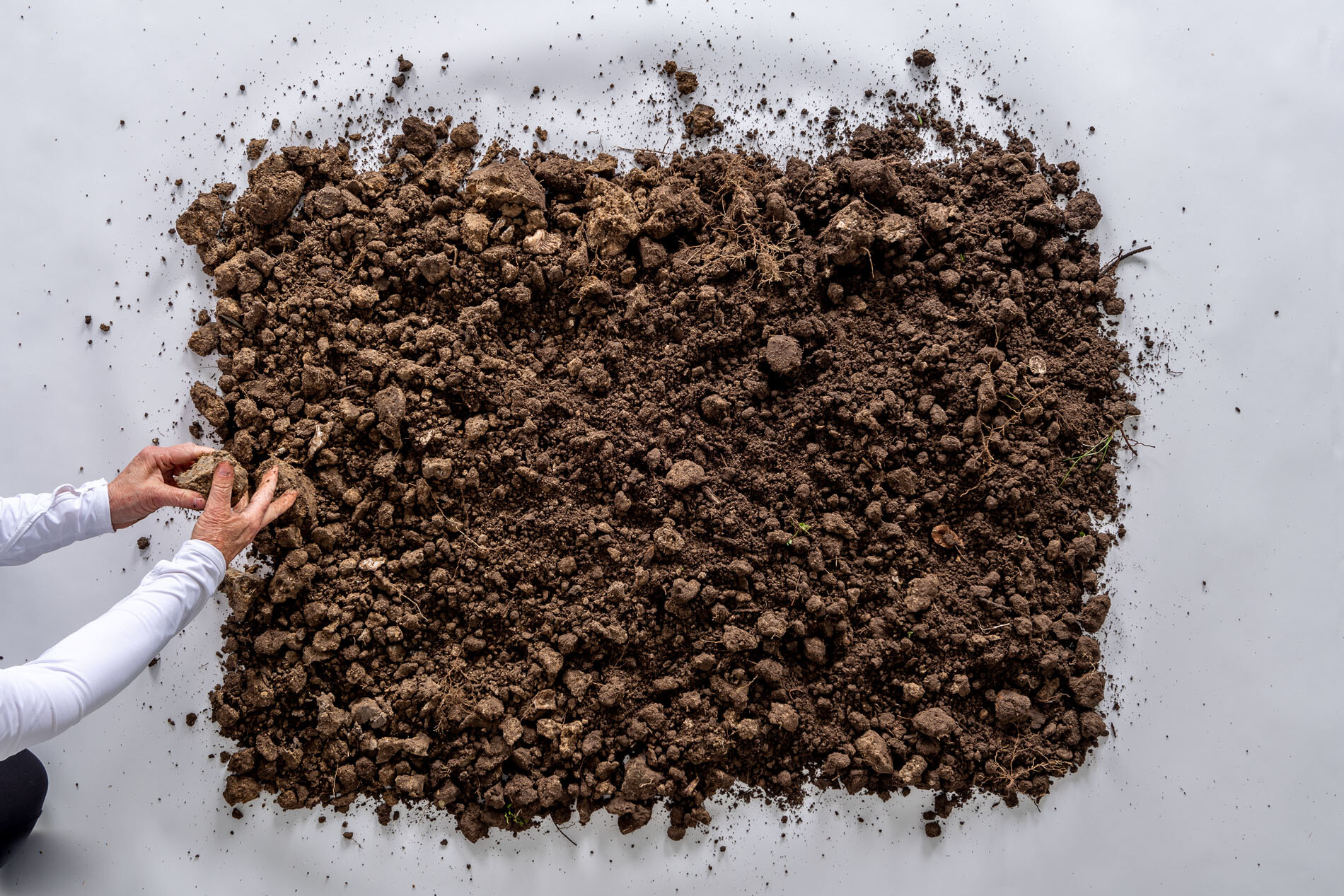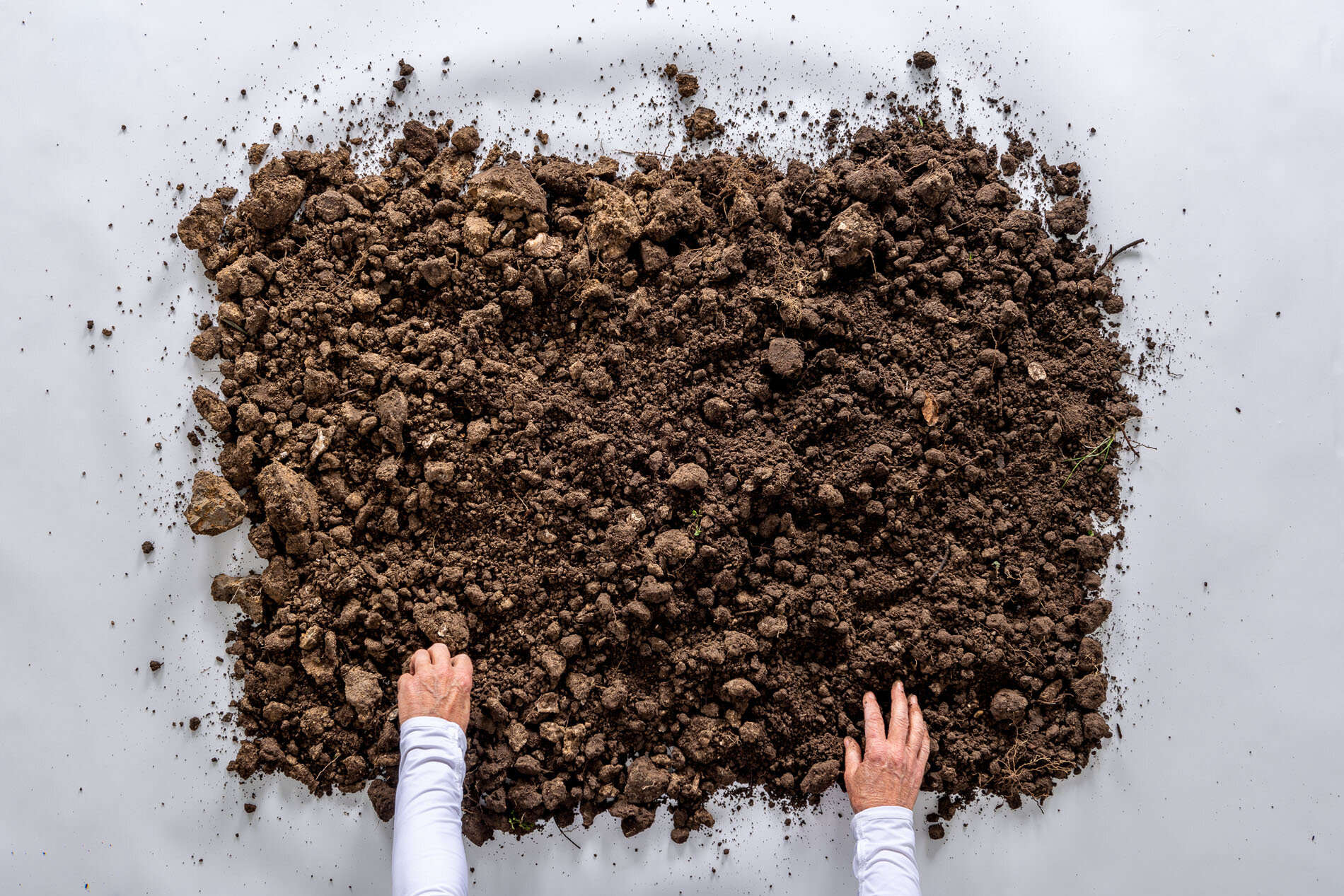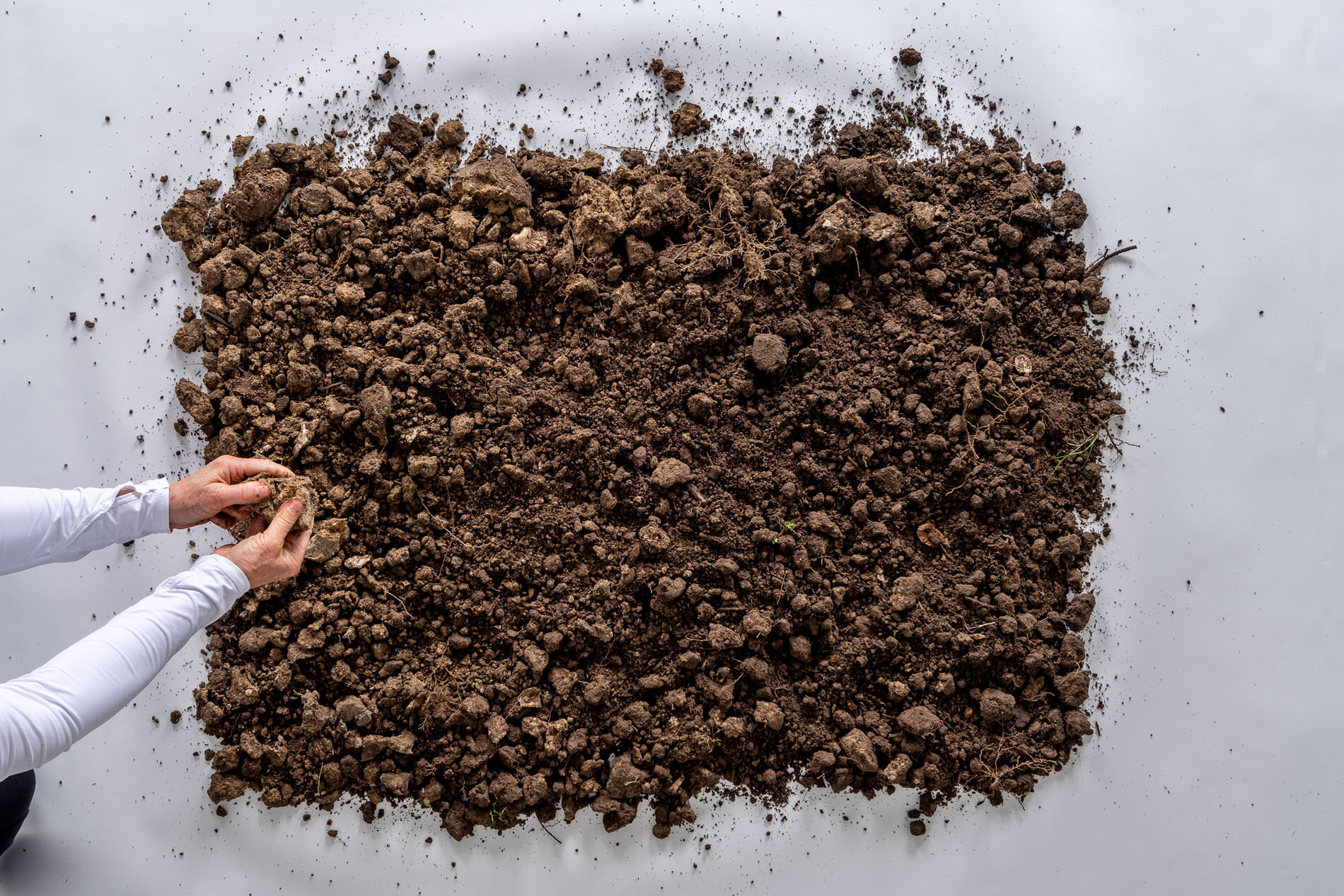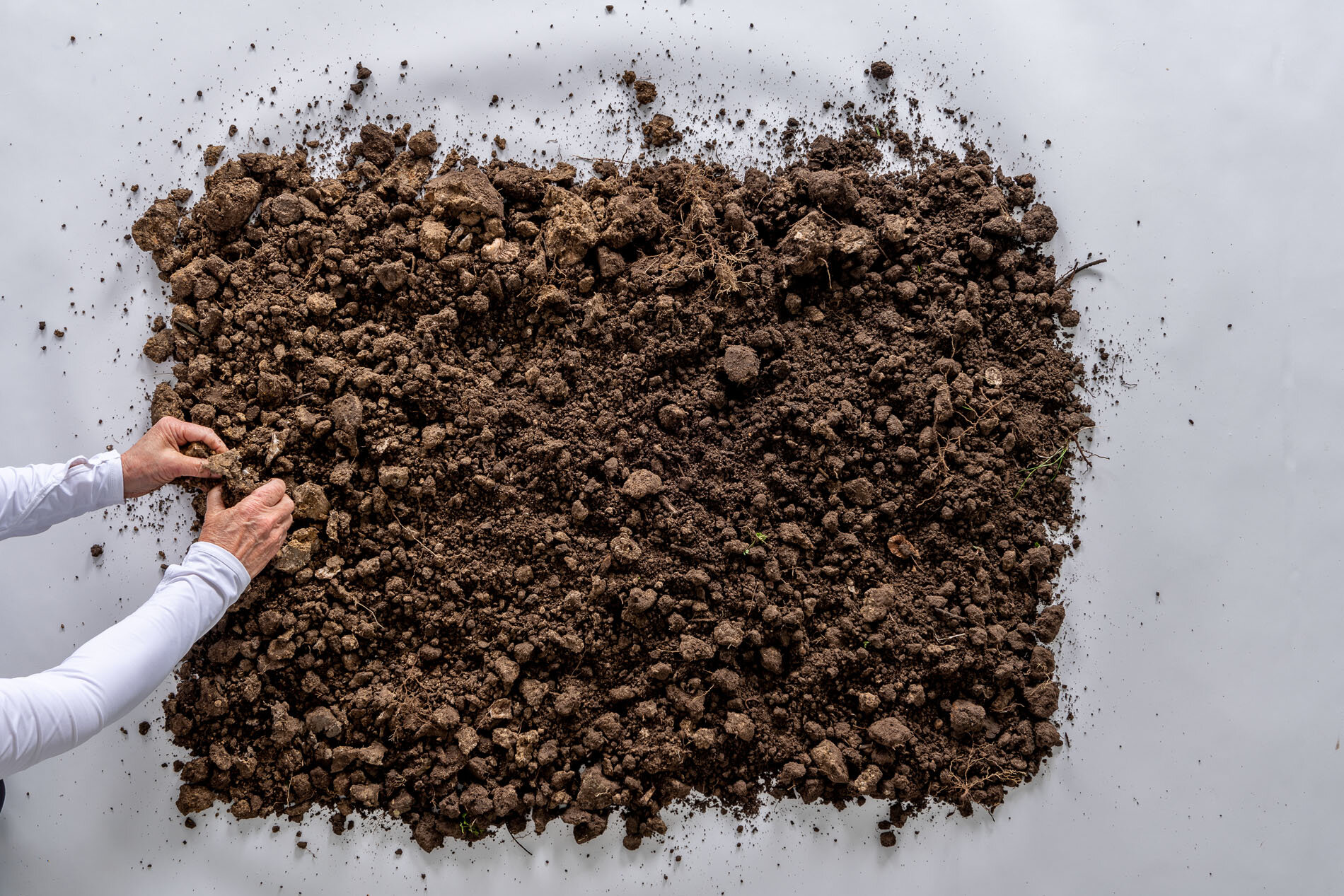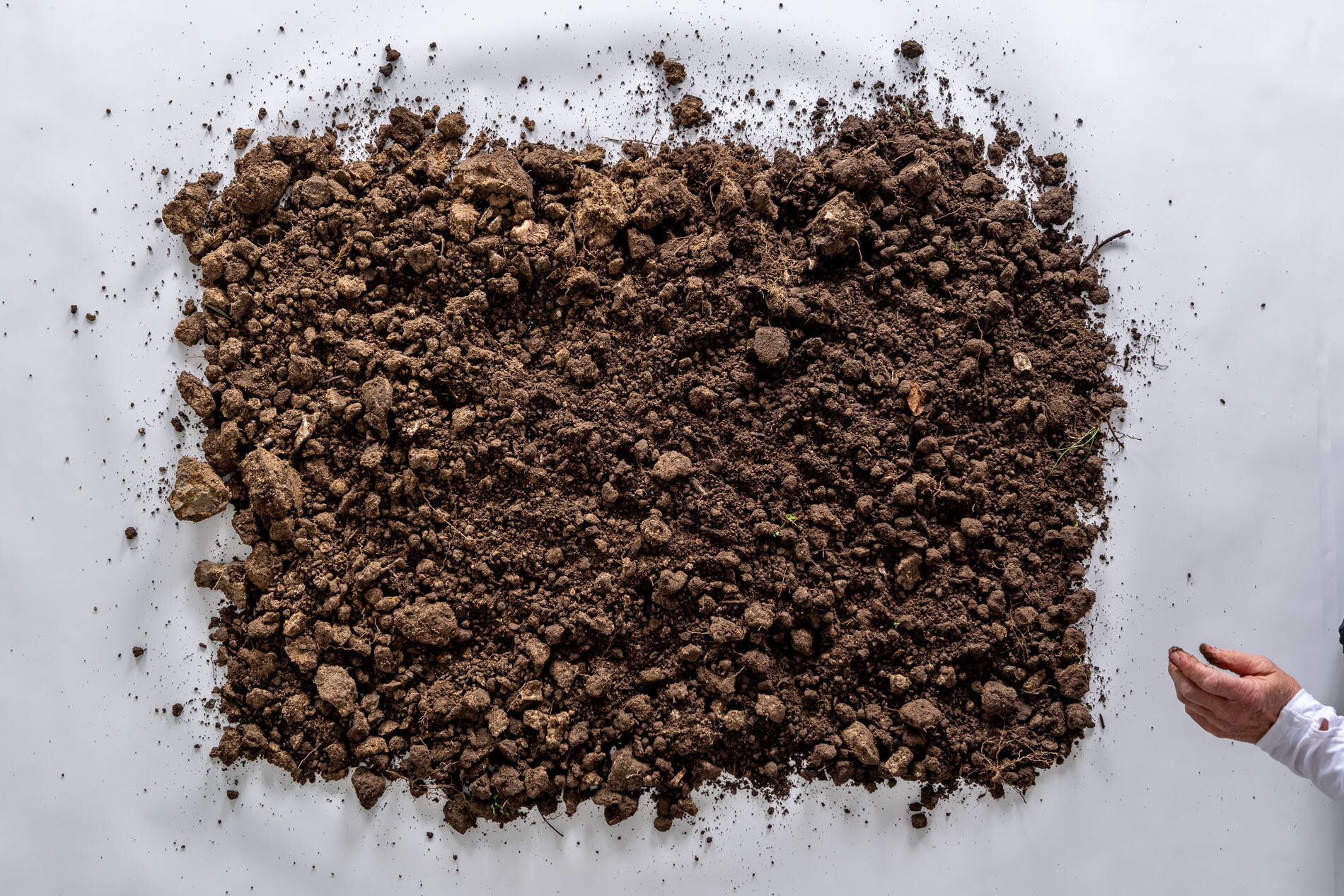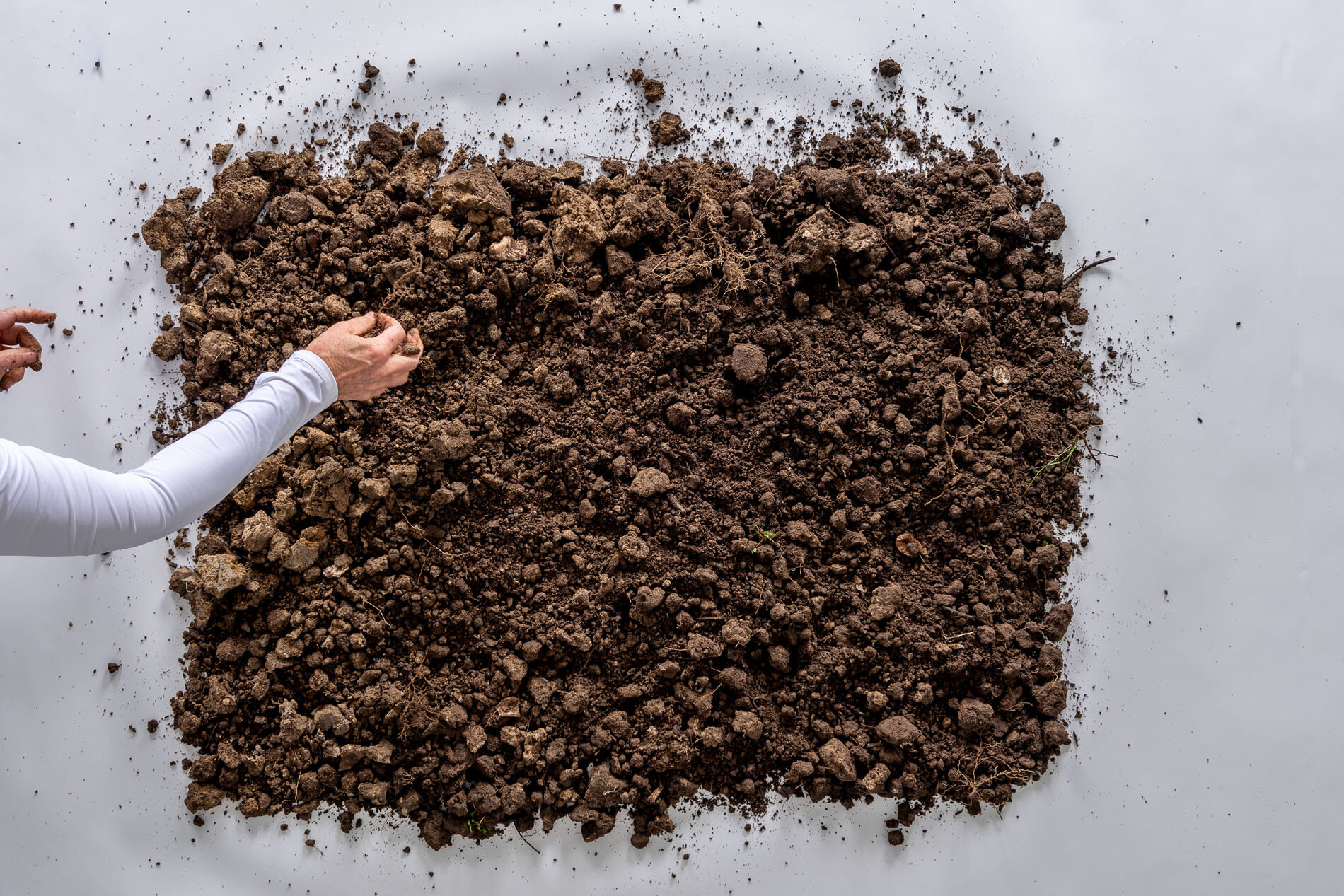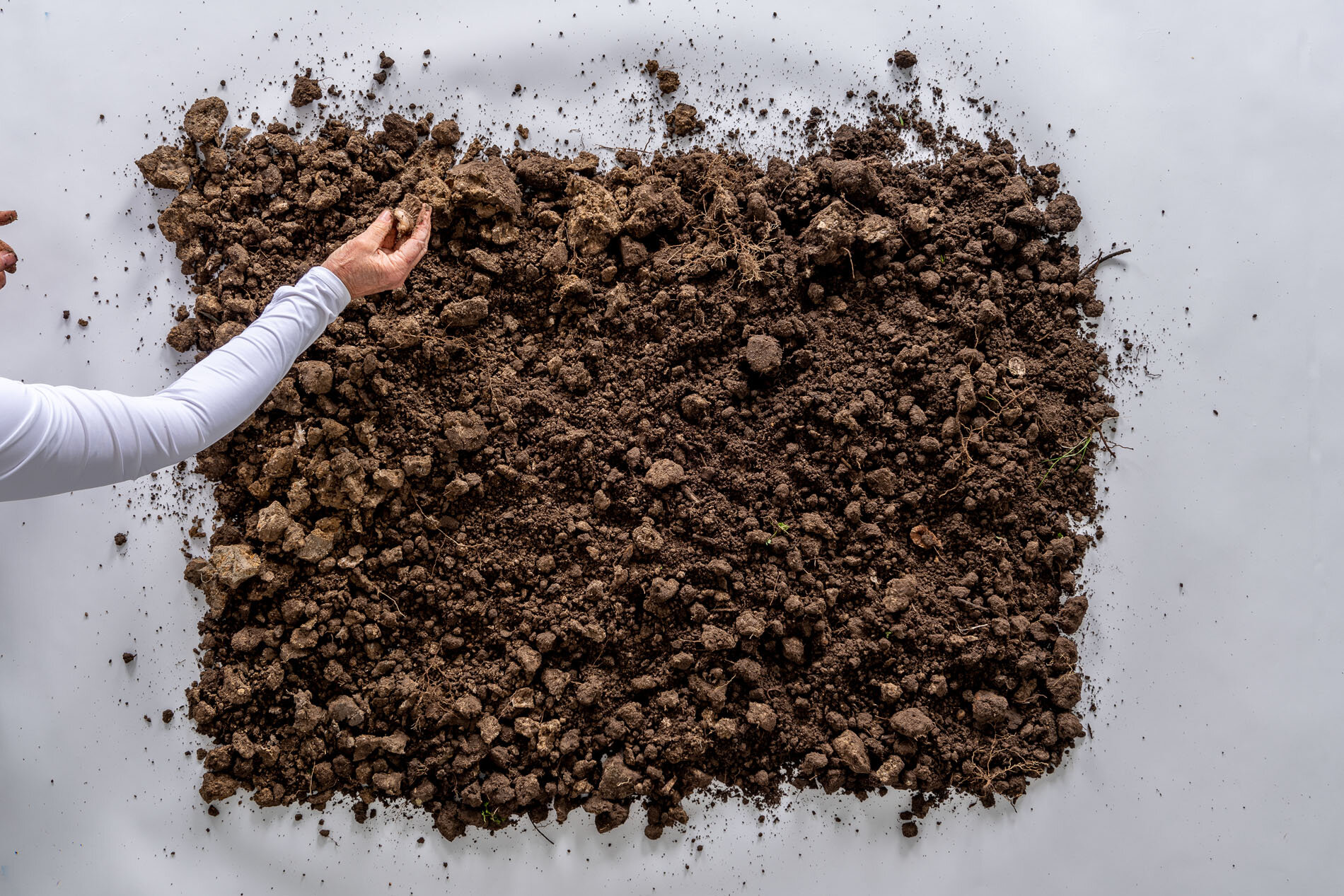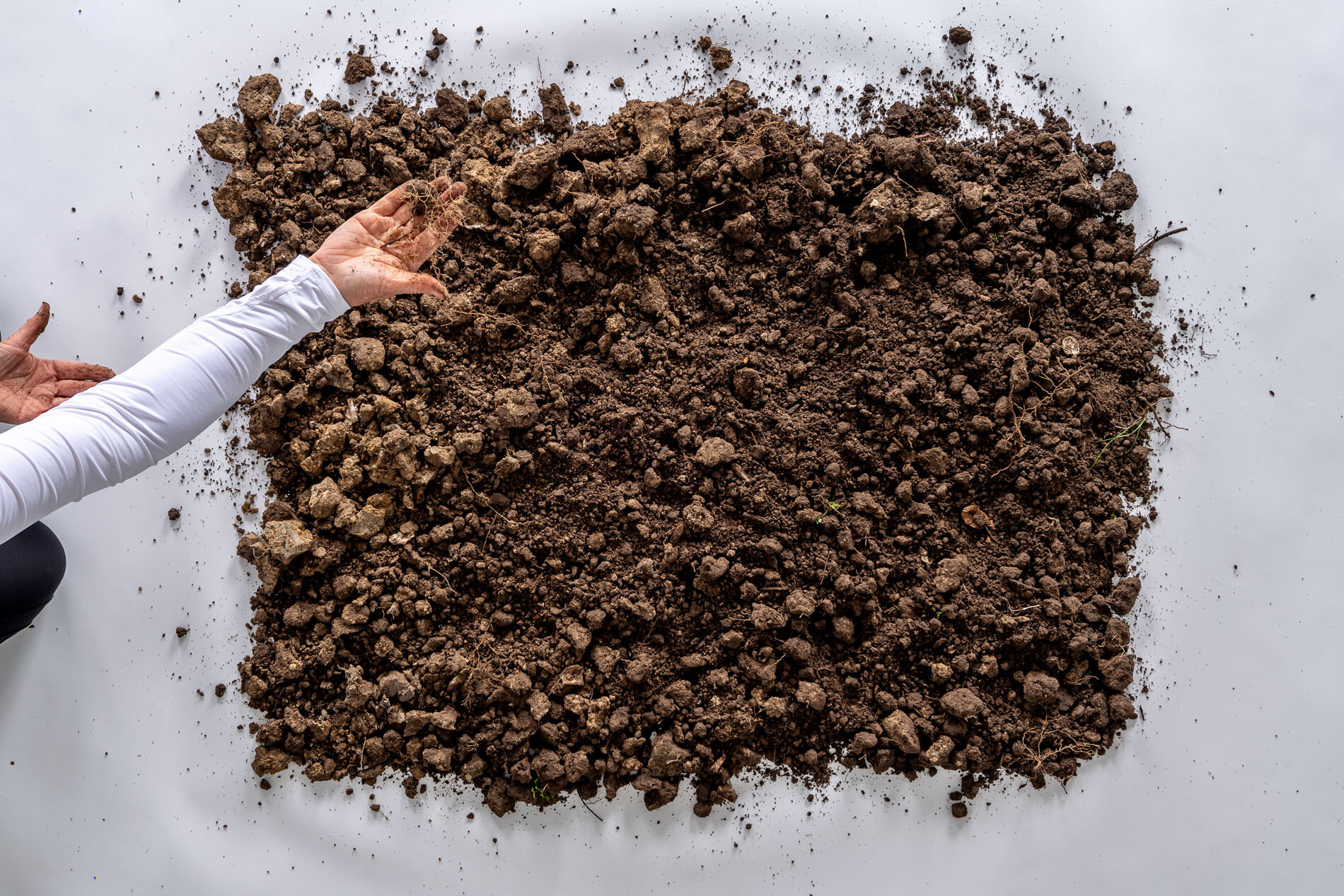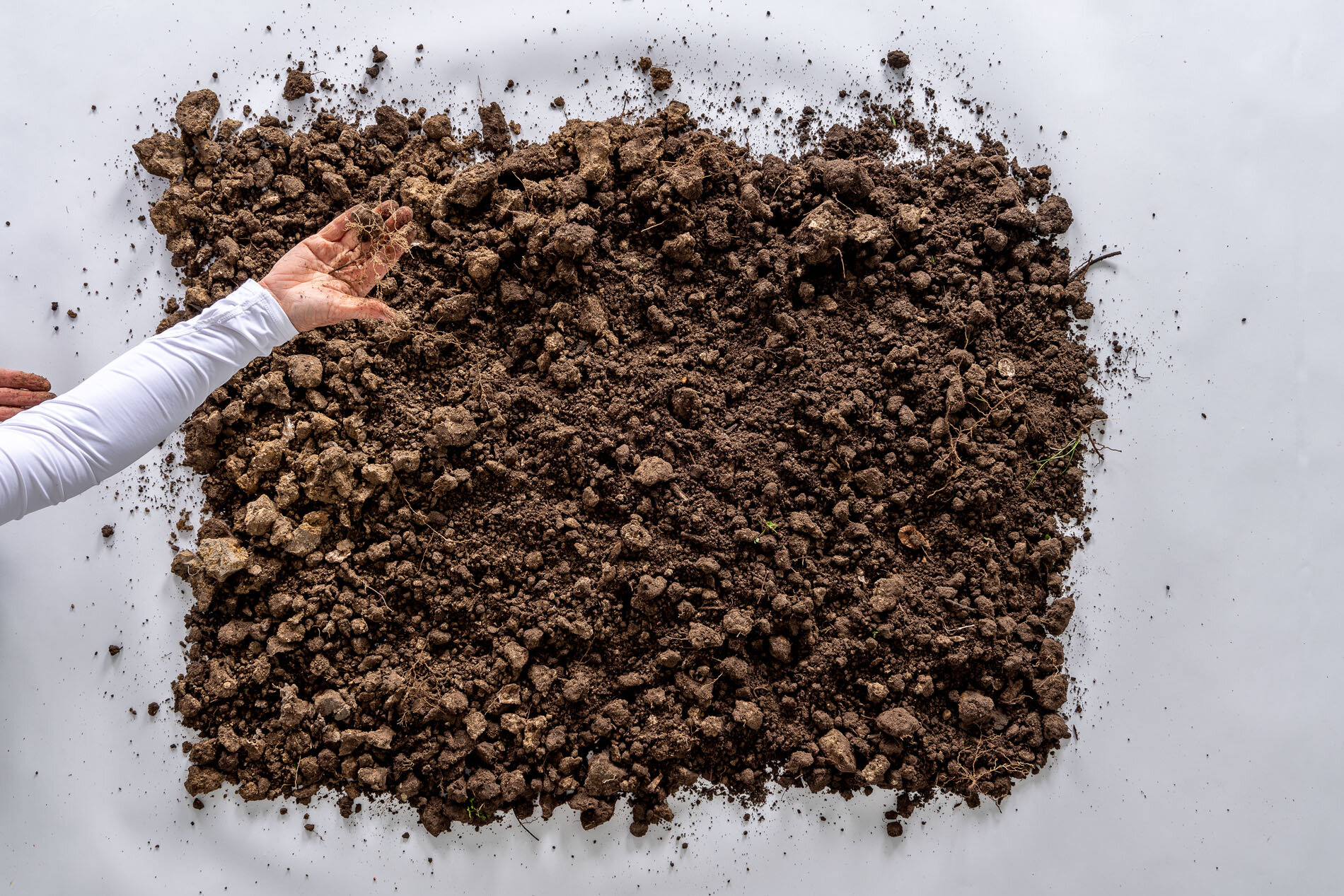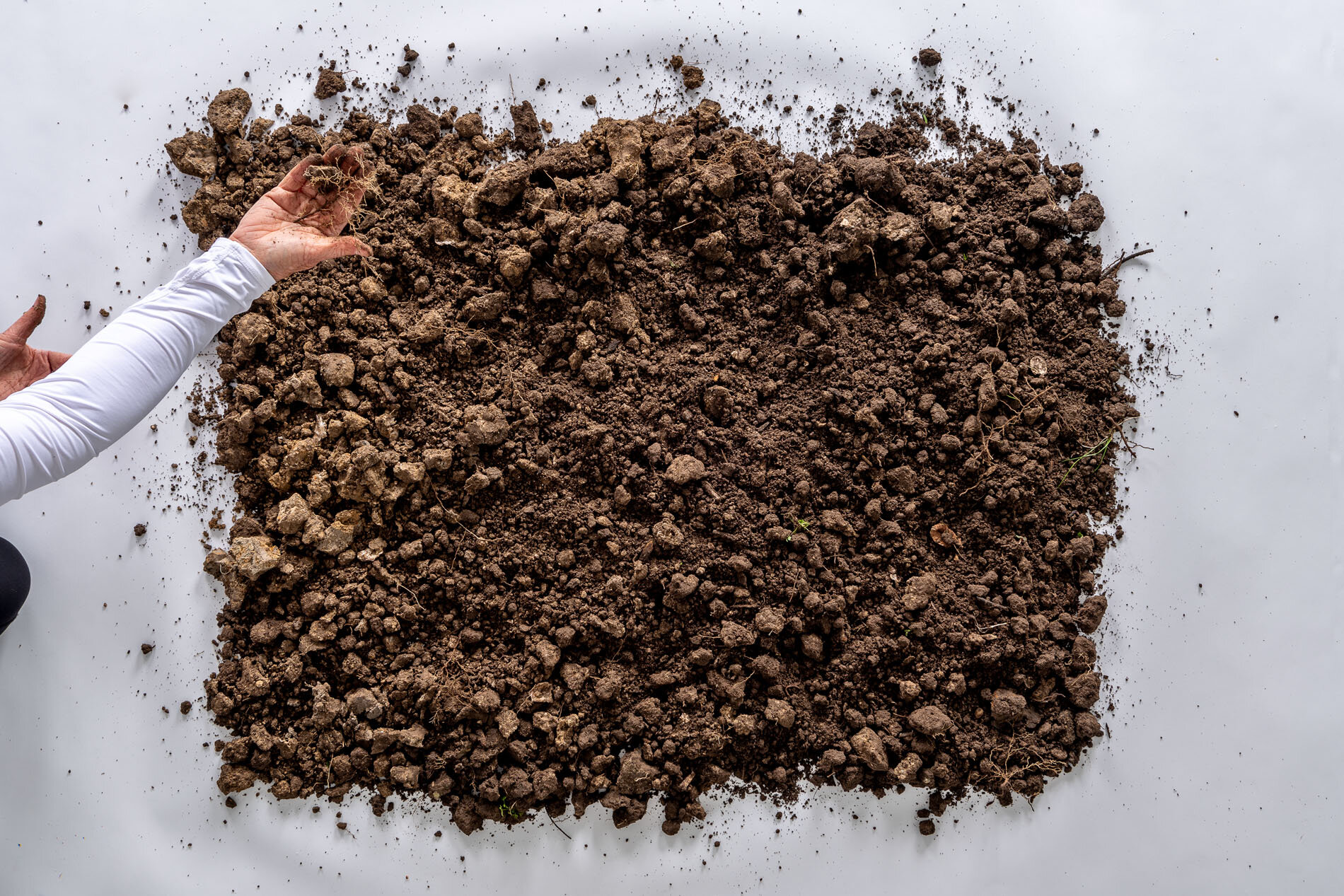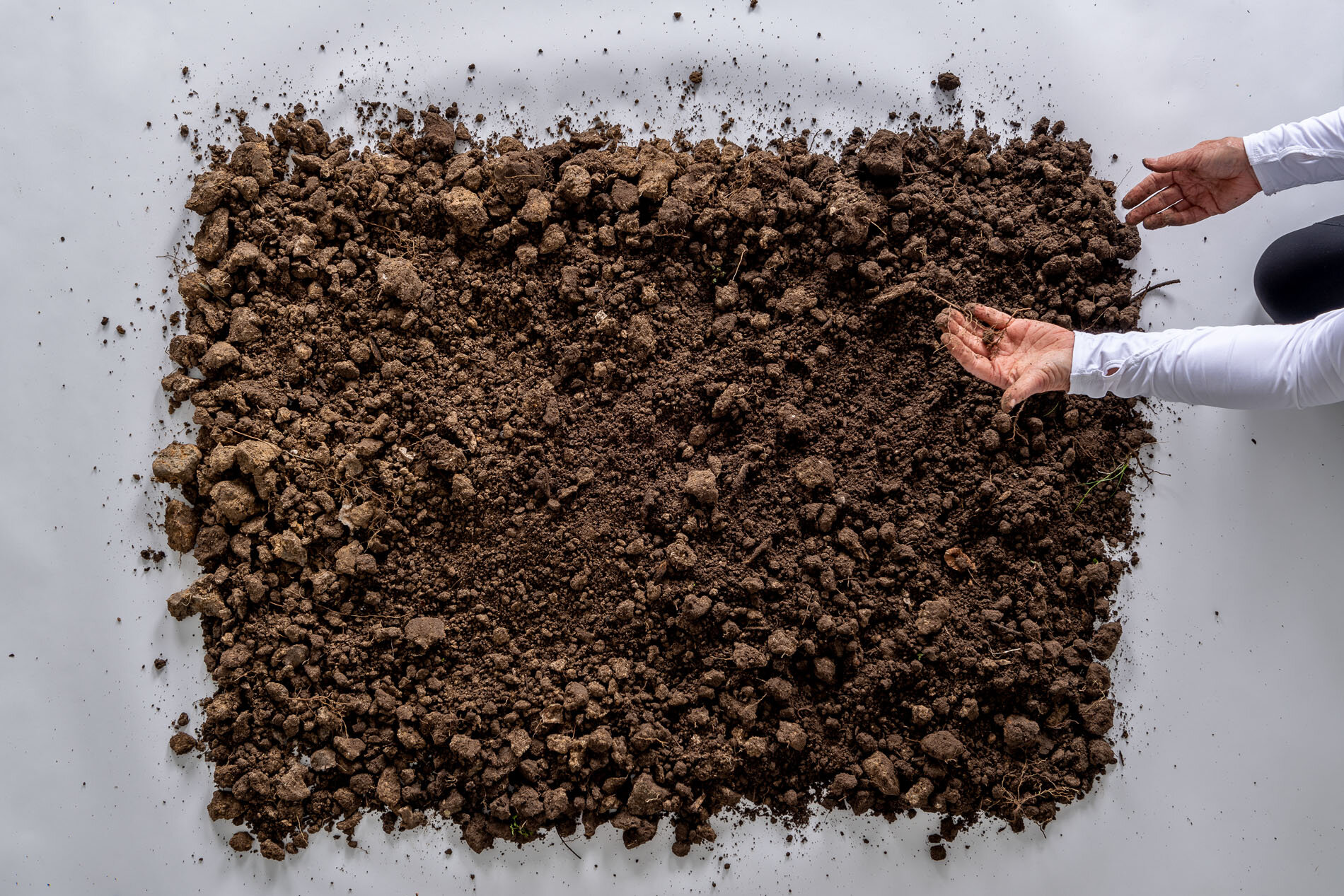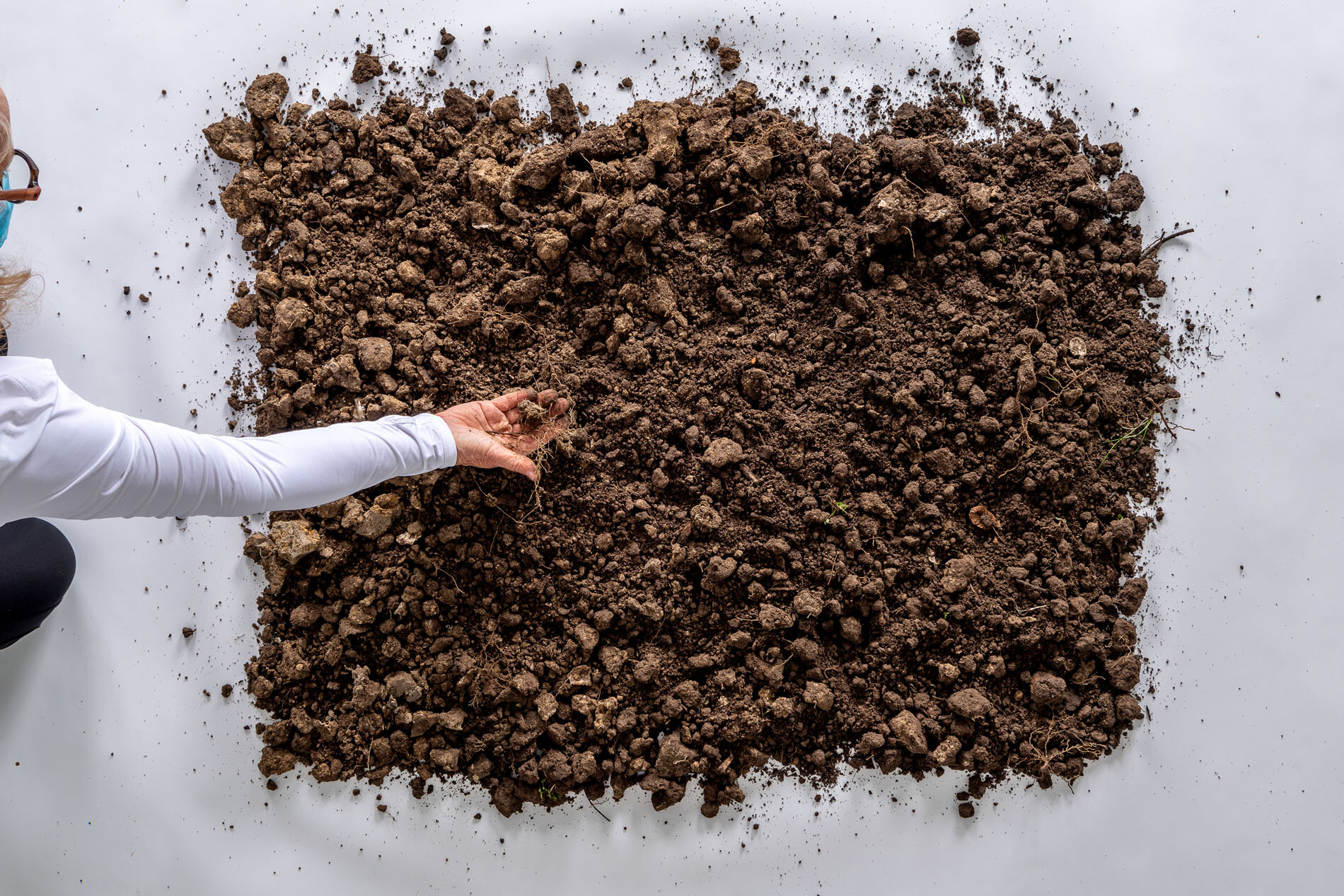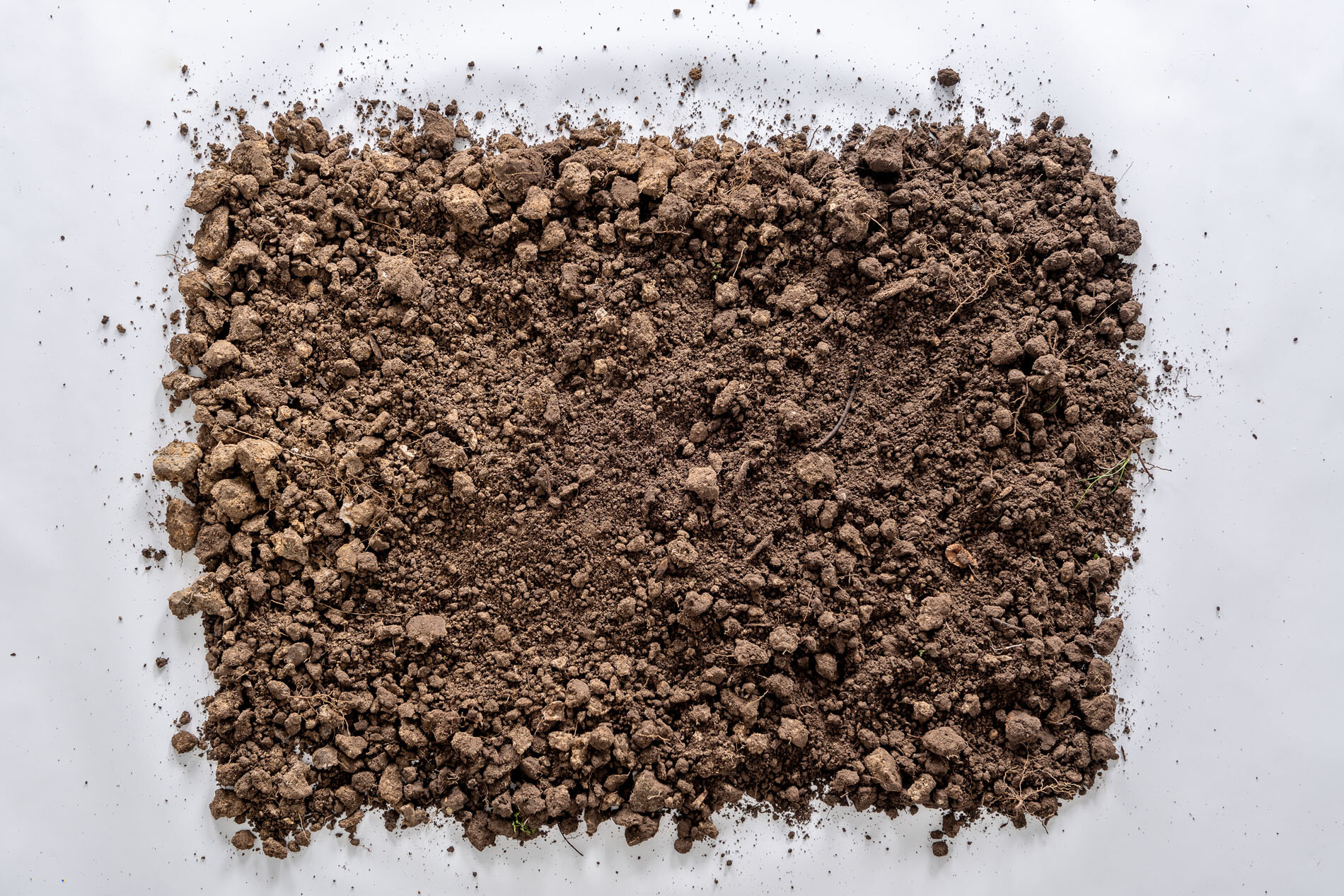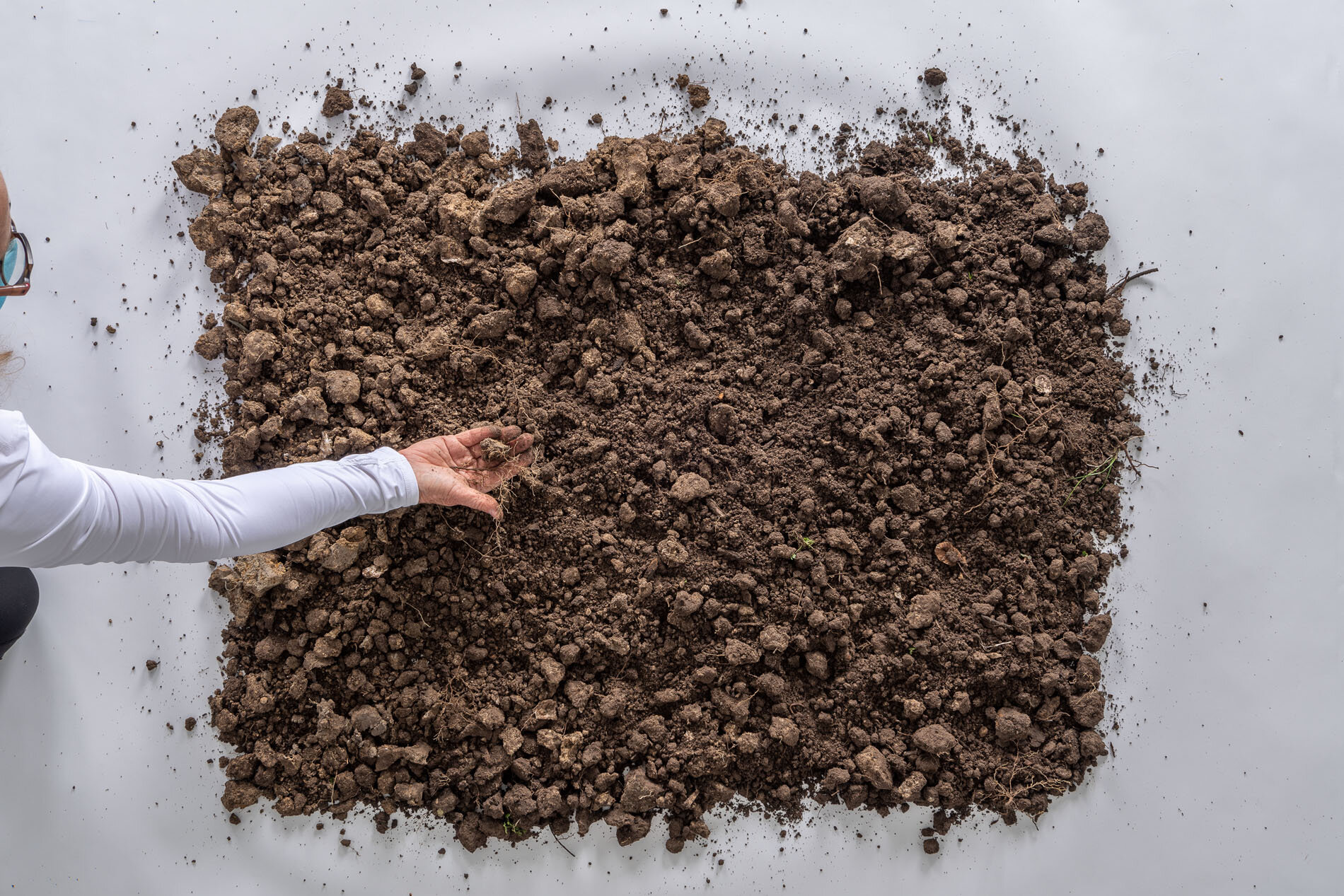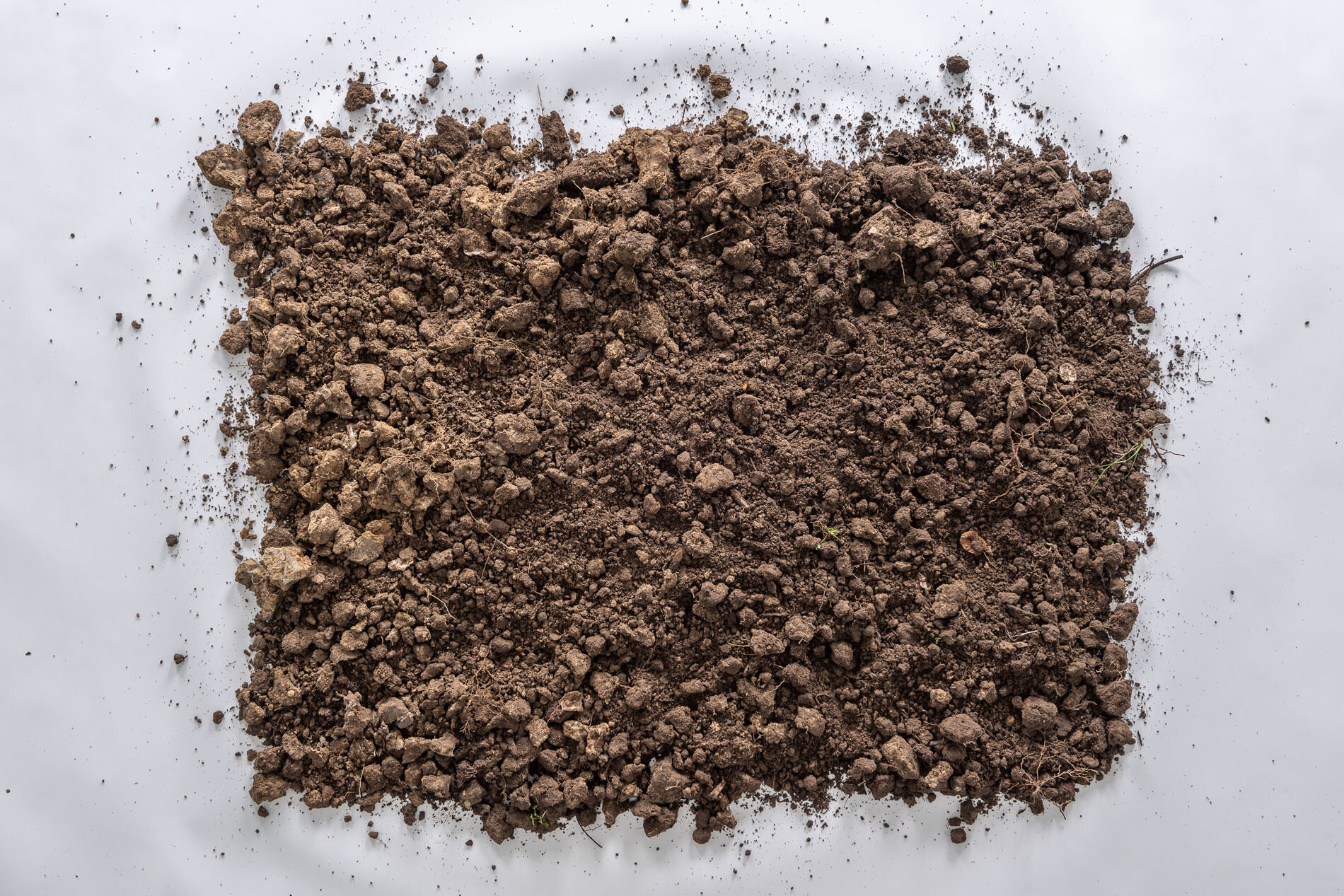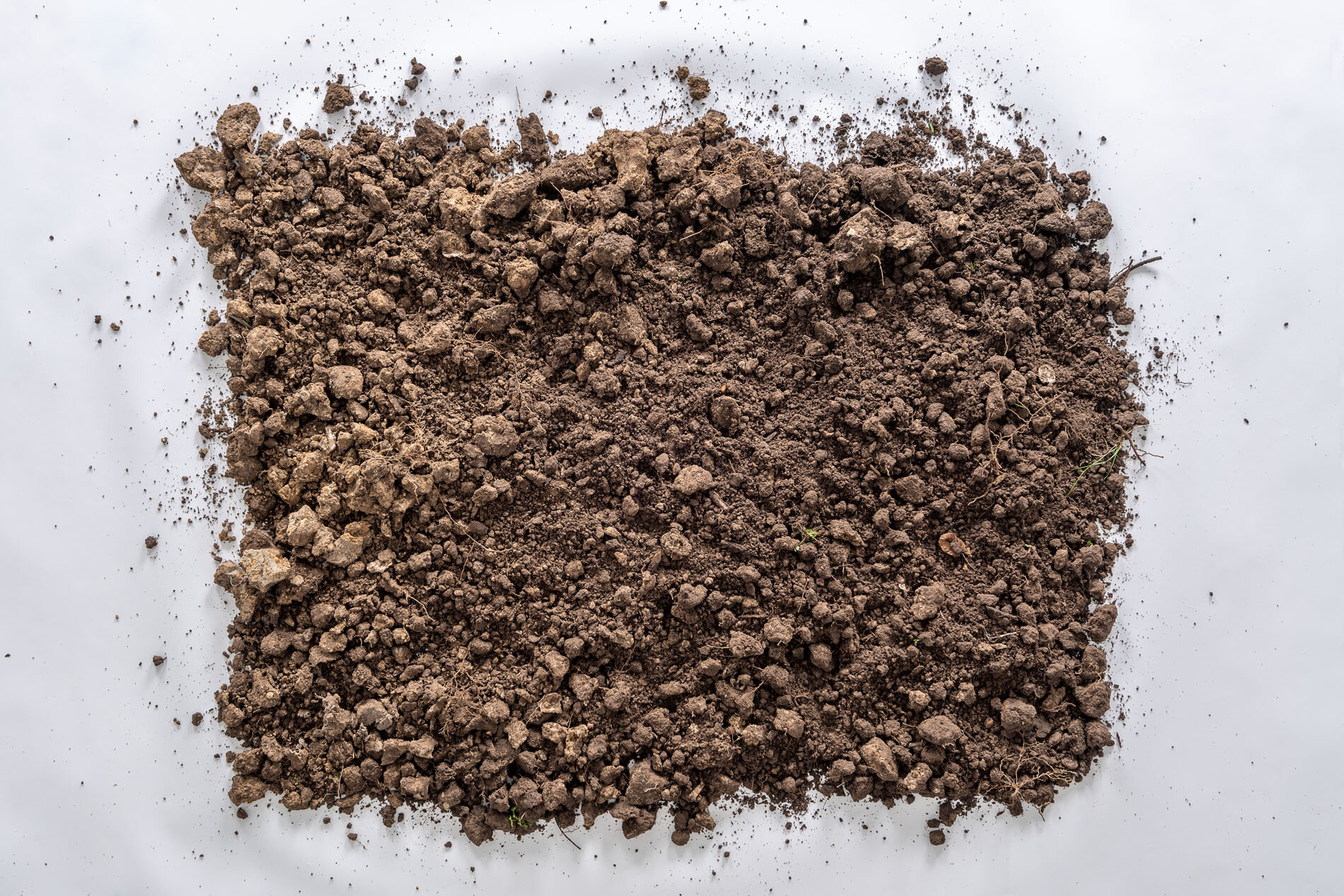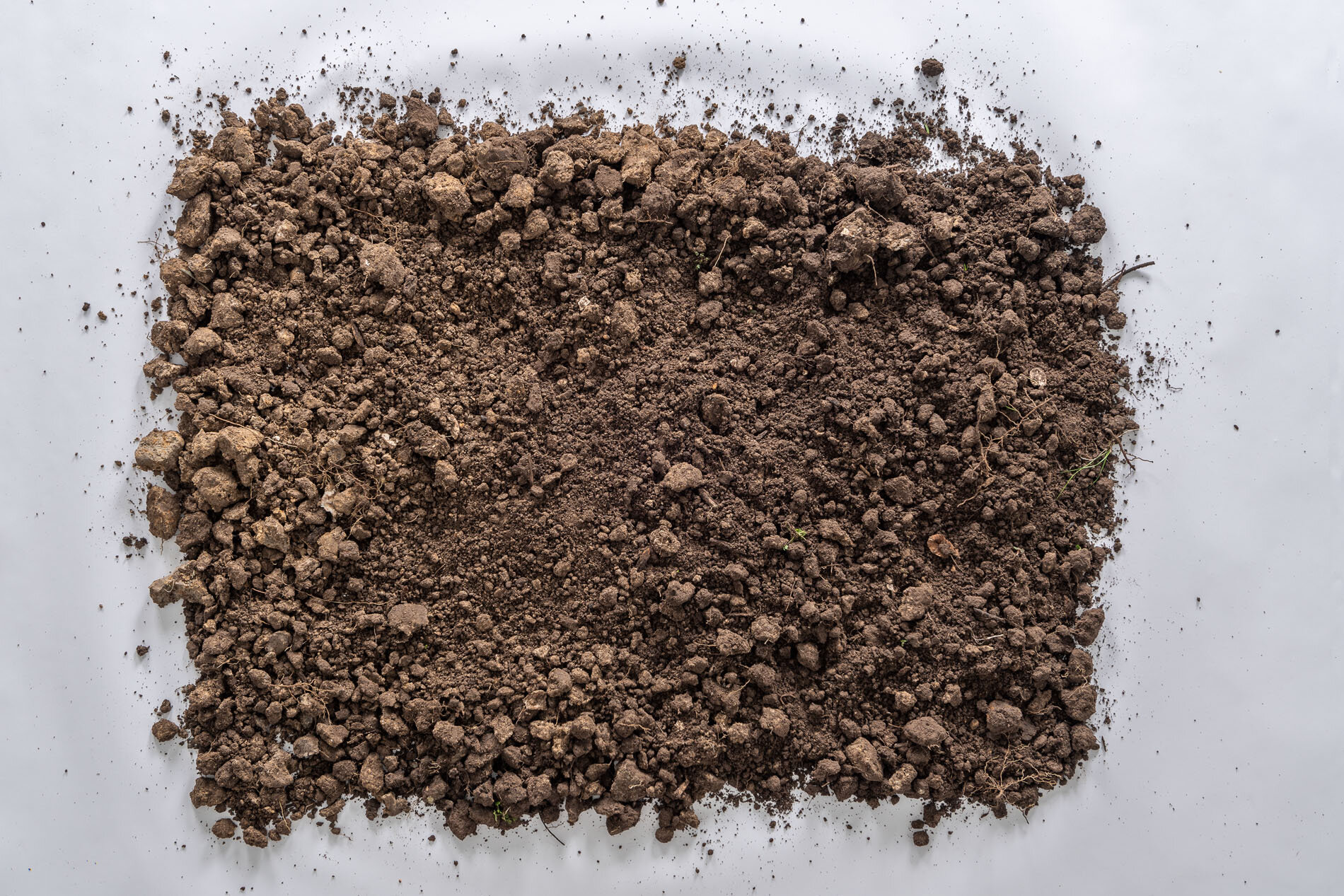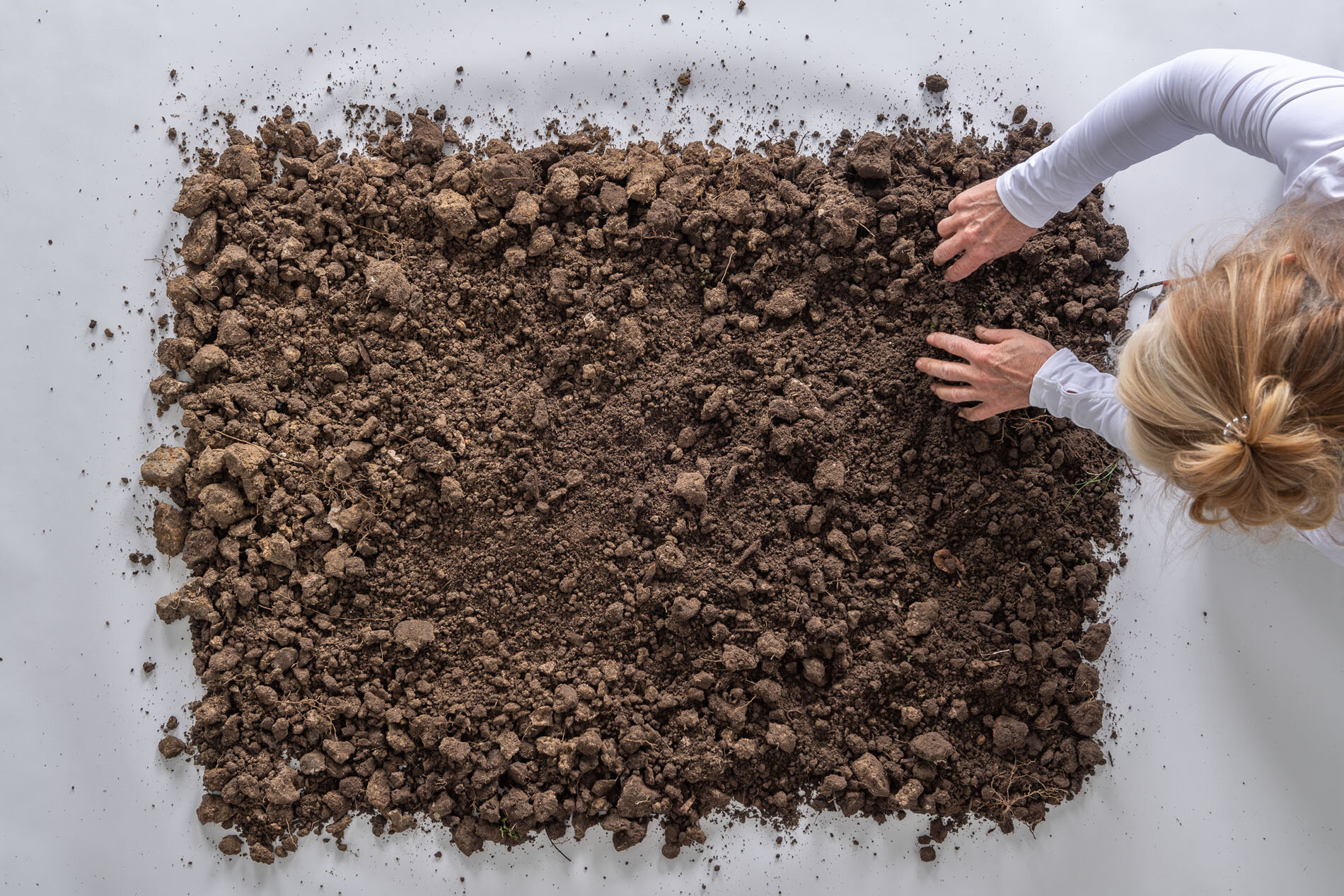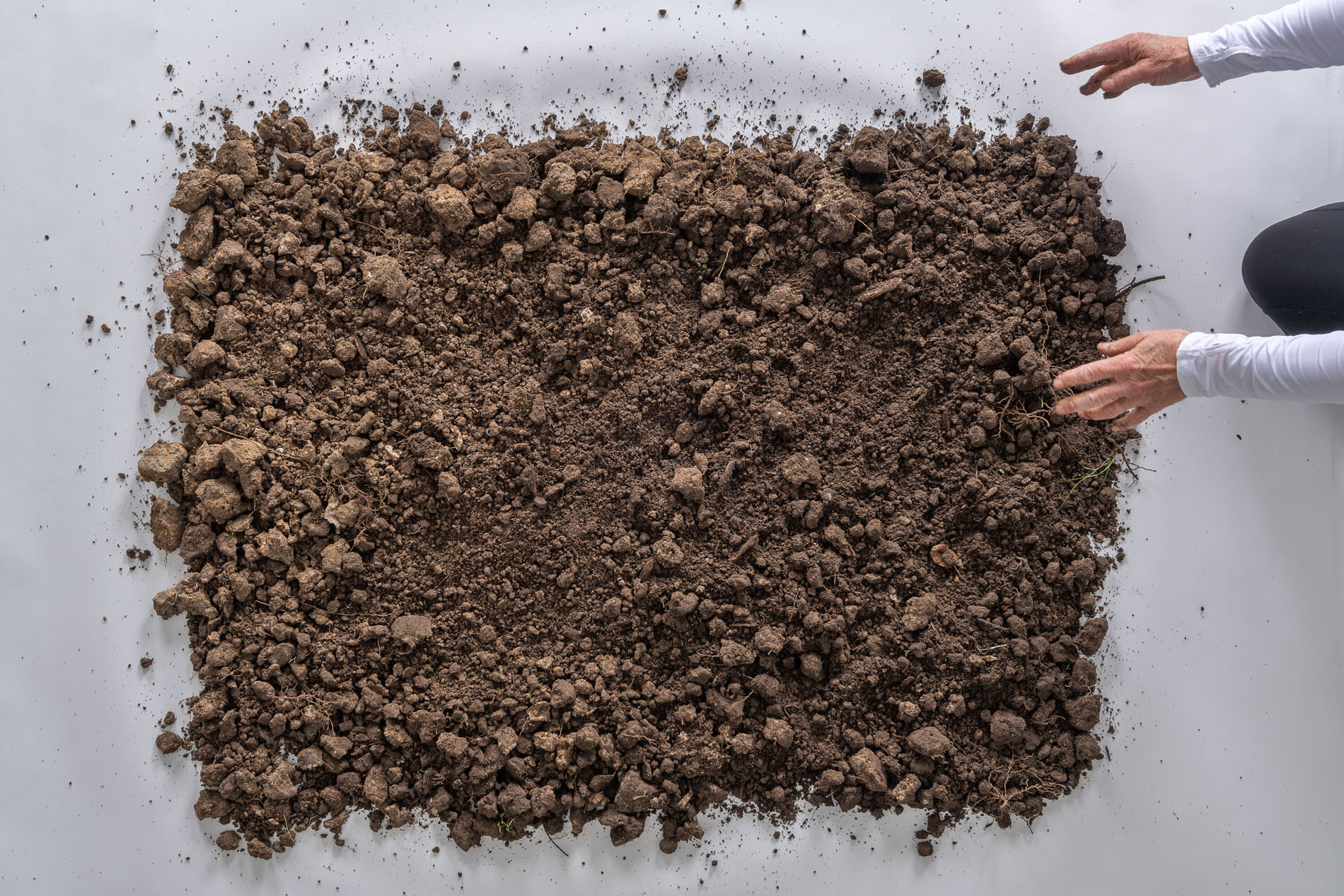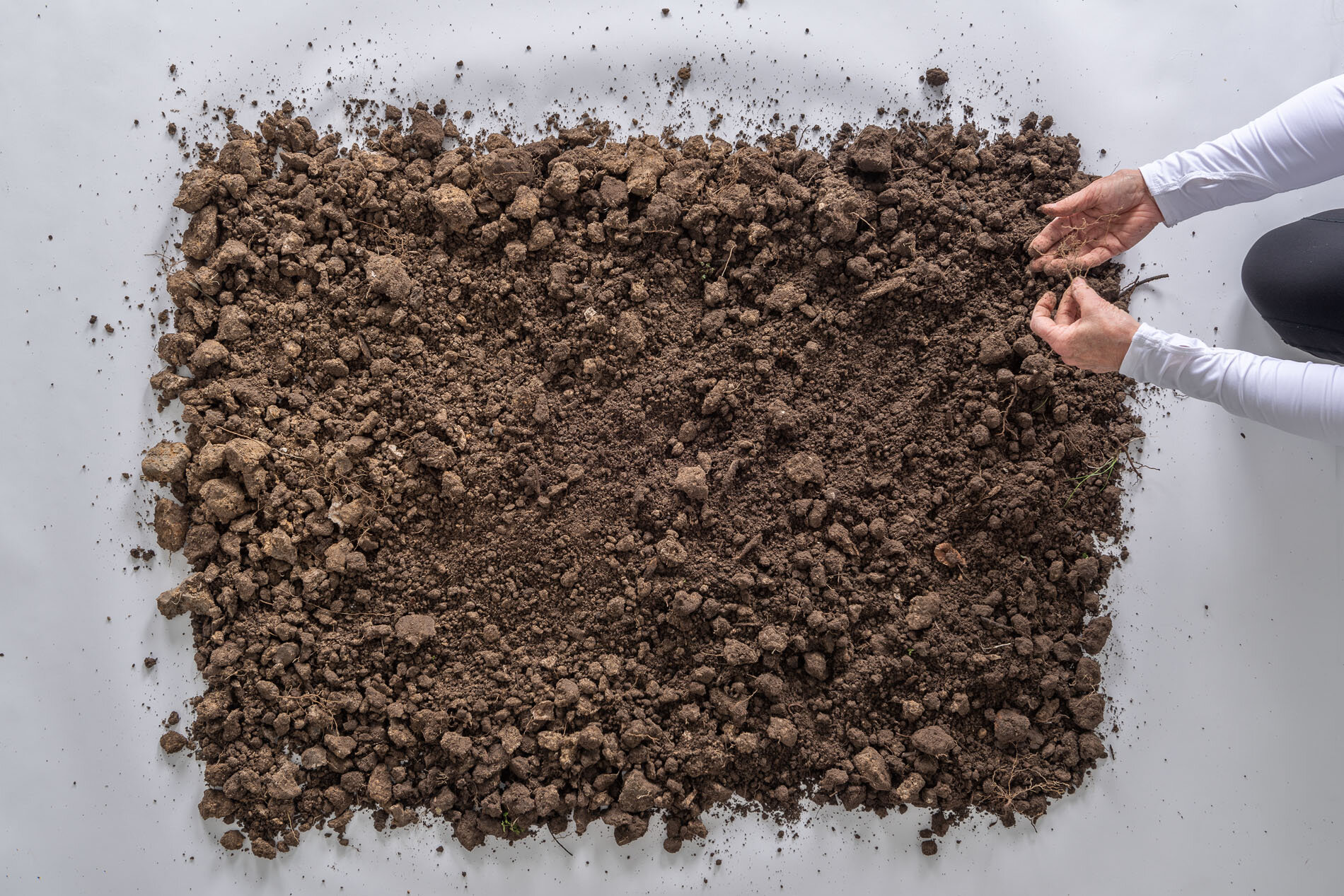Building the base of a living sculpture
"It may be doubted if there are any other animals which have played such an important part in the history of the world as these lowly organized creatures."
—Charles Darwin
I will perform three types of soil tests: the Ground — Earthworm, Glue — fungi to bacteria using MicroBIOMETER cell phone app, and the Soiled Pants/cotton fabric degradation. The tests are performance art, bio-art, and textile sculpture respectively.
GROUND — EARTHWORM
On February 3rd, 2021 the week before GroundWORK was installed in the southwest corner of Symbiosis, I performed the first soil test, the earthworm test. The soil was 65 degrees and slightly moist. I dug a round hole one foot in diameter and one foot deep. Mindful of the soil’s natural order, I deposited the ground into a bucket.
I took the bucket of ground immediately to my photographer's studio. Earlier in the week, I purchased a seven-foot wide roll of photographer's bright white backdrop paper.
I placed the bucket of brown raw material on the paper and measured a three-by-four-foot space. I then spread the test material one inch thick across the twelve square feet. I can easily see if there are any living organisms. They can be photographed, documenting the progress of building a living kinetic sculpture. With care, I emptied the bucket horizontally.
The deepest soil is on the left, and the topsoil is on the right. Spreading the dirt horizontally provides even lighting to all depths of soil. I then slowly began to sift through the earth and distribute it over the twelve-foot rectangle, looking for anything living. The cubic foot was sterile of any visible living beneficial microbes; the bucket was full of clod, not soil.
THE PERFORMANCE
ONE CUBIC FOOT SPREAD INTO TWELVE SQUARE FEET BY ONE INCH.
It consisted of clumps of grey clay and a few tiny delicate root fibers in the material. The dirt from the surface was the richest and darkest in color. At the end of the photoshoot, the clay and clod were quickly drying out from the heat of the lighting. I piled the earth back into the bucket topsoil first and returned it to the garden, with the topsoil in its original position.
In terms of biological activity, earthworms in the garden are evidence of the bacteria and beneficial microbes necessary for healthy soil. Constructing a living sculpture, the soil microbes secrete a substance that binds non-living soil particles to each other and to themselves; they produce the glue that holds the particles of the base of the sculpture together. A sculptor of living soil, Microbes are my best friend.
My goal is to create an environment that will support at least ten earthworms for every soil cubic foot.
under construction - stay tuned
GLUE — MicroBiometer
( future write up)
SOILED — Tighty-Whities
Typically soil scientists test soil for Saprophytic fungi that recycle wood and live on dead material by burying cotton fabric. I planted new, washed men's size medium cotton briefs.




